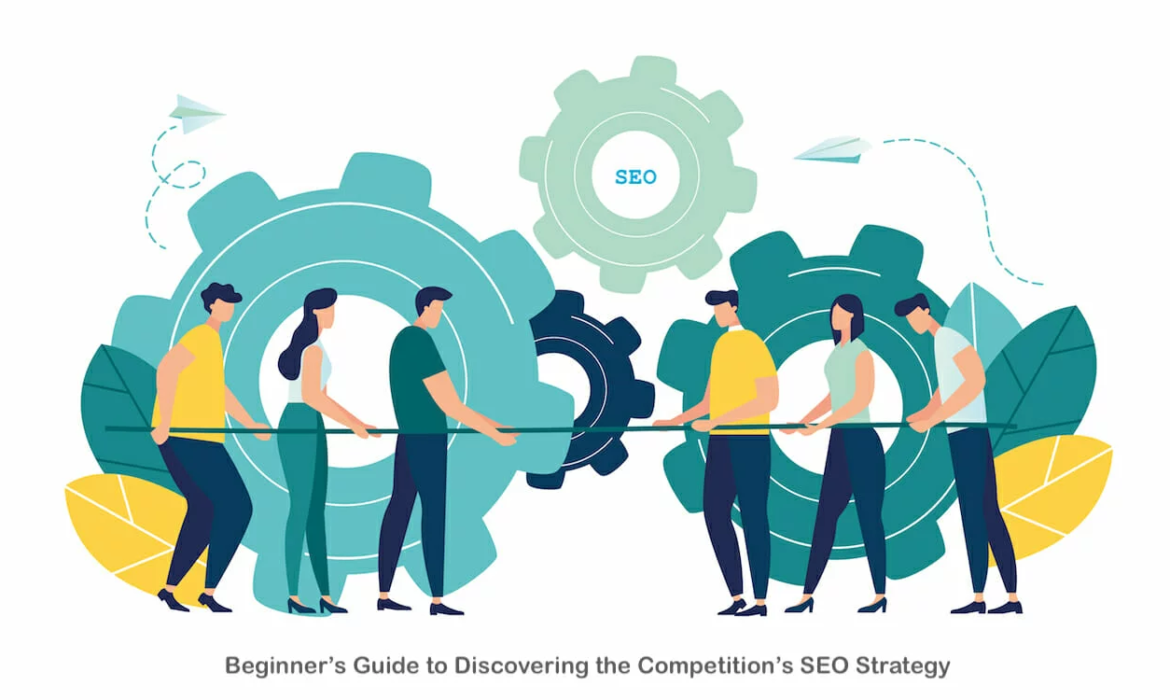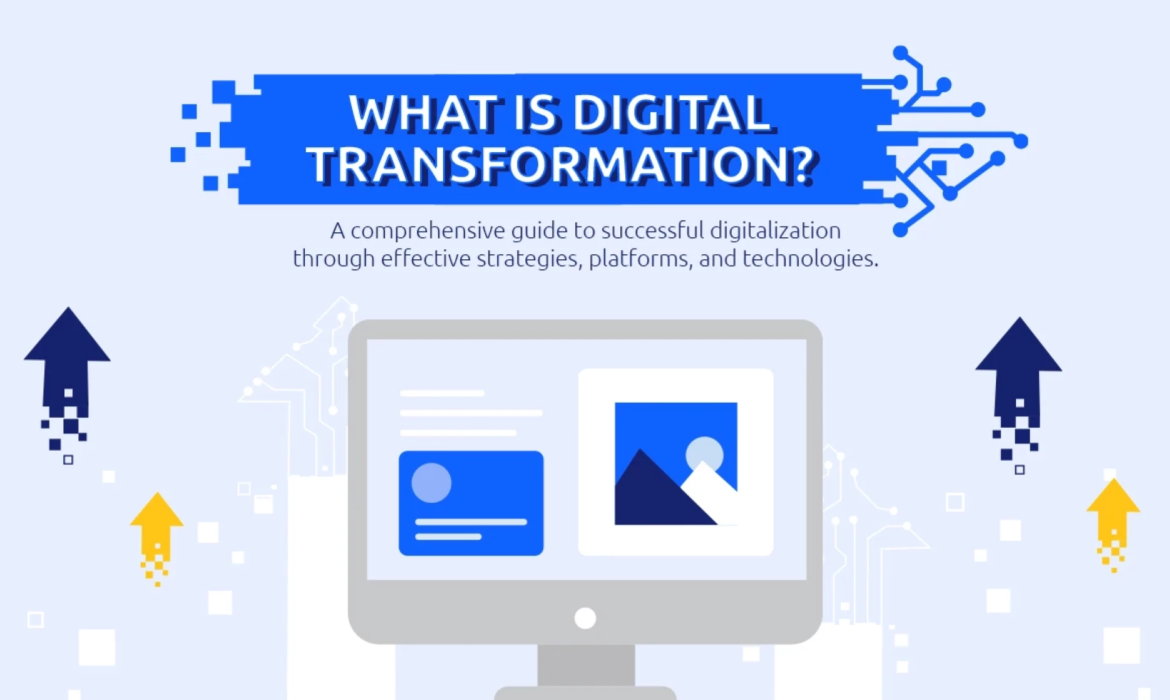5 Common SEO Problems: A Comprehensive Guide 2023
In the ever-evolving digital landscape, mastering search engine optimization (SEO) is paramount for achieving online visibility and driving organic traffic to your website. At Finest SEO Agency., we understand the challenges that businesses face when it comes to SEO, and we’re here to provide you with an in-depth guide to conquering common SEO problems and outranking the competition.

Introduction: Unveiling the Significance of SEO
In the digital era, where millions of websites are vying for attention, a robust SEO strategy is a prerequisite for success. Search engines like Google continuously update their algorithms to deliver the most relevant and high-quality results to users. Ensuring your website is optimized for these algorithms is essential to rank prominently in search engine results pages (SERPs).
Also Check Mastering Meta Tags: Elevate Click-Through Rates and SEO Success 2023
Problem 1: Poor Keyword Research and Implementation
Keywords are the foundation of SEO. Failing to conduct comprehensive keyword research and strategically implement them throughout your content can severely impact your website’s visibility. A thorough analysis of relevant keywords, including long-tail variations, ensures that your content aligns with user intent, driving targeted organic traffic.
Problem 2: Neglecting On-Page SEO Factors
On-page SEO elements, such as meta titles, descriptions, and headers, play a pivotal role in signaling your content’s relevance to search engines. Crafting compelling meta tags and optimizing headings with primary and secondary keywords enhances the discoverability of your content and boosts your chances of outranking competitors.
Problem 3: Inadequate Backlink Strategy
Quality backlinks are a testament to your website’s authority and credibility. Building a robust backlink profile through ethical means, such as guest posting, influencer outreach, and content partnerships, establishes your website as a trusted source in your industry, leading to improved rankings.
Problem 4: Ignoring Mobile-Friendly Optimization
In an era dominated by mobile devices, neglecting mobile optimization is a grave mistake. Google’s mobile-first indexing prioritizes mobile-friendly websites. Employ responsive design, optimize images, and ensure seamless user experience across various devices to gain a competitive edge.
Problem 5: Slow Page Load Speed
User experience and page load speed are intrinsically linked. A slow-loading website frustrates visitors and can lead to higher bounce rates. Compressing images, leveraging browser caching, and utilizing Content Delivery Networks (CDNs) are strategies to accelerate your website’s performance.
Problem 6: Thin and Duplicate Content
Search engines penalize websites with thin or duplicate content. Crafting high-quality, original, and informative content not only pleases search algorithms but also engages your audience. Regularly update your content to reflect industry trends and maintain relevance.
Problem 7: Not Utilizing Local SEO
For businesses targeting a specific geographic area, local SEO is indispensable. Optimize your Google My Business listing, acquire local citations, and encourage customer reviews to enhance your visibility within your locality.
Problem 8: Overlooking Technical SEO Issues
Technical SEO lays the groundwork for optimal crawling and indexing. Address issues such as broken links, XML sitemap optimization, and structured data implementation. By ensuring a technically sound website, you pave the way for improved search rankings.

Conclusion: Your Path to SEO Excellence
Navigating the complex realm of SEO requires a comprehensive understanding of its nuances. By tackling common SEO problems head-on, you position your website to outshine competitors and secure higher search engine rankings. At [Your Company Name], we’re committed to guiding you through the intricacies of SEO, empowering you to achieve online prominence and sustained success.
Here’s a FAQ section to complement the comprehensive guide on mastering common SEO problems:

Frequently Asked Questions (FAQs)
1. What is SEO, and why is it important for my website?
Search Engine Optimization (SEO) is the practice of optimizing your website to enhance its visibility in search engine results pages (SERPs). It involves various strategies and techniques that aim to improve your website’s ranking, thereby driving organic (unpaid) traffic to your site. SEO is crucial because higher search engine rankings lead to increased online visibility, credibility, and ultimately, more qualified leads and conversions.
2. How can I conduct effective keyword research?
Effective keyword research involves identifying relevant keywords and phrases that users are likely to search for. Tools like Google Keyword Planner, SEMrush, and Ahrefs can assist in finding keywords with high search volume and relatively low competition. Focus on long-tail keywords that cater to specific user intents to drive targeted traffic.
3. What are backlinks, and why are they important for SEO?
Backlinks, also known as inbound links, are links from other websites that point to your site. They are important for SEO because search engines view them as endorsements of your website’s authority and credibility. Quality backlinks from reputable sources can significantly improve your search rankings. However, it’s crucial to acquire them through ethical means, avoiding spammy practices.
4. How does mobile optimization affect SEO?
Mobile optimization refers to ensuring your website functions seamlessly on various mobile devices. Google prioritizes mobile-friendly websites in its rankings due to the increasing use of smartphones. Mobile optimization impacts user experience, bounce rates, and overall engagement. A well-optimized mobile site can improve your SEO and user satisfaction.
5. What role does content play in SEO?
Content is a cornerstone of effective SEO. High-quality, informative, and relevant content not only engages users but also provides search engines with valuable information to rank your website. Regularly publishing fresh and unique content can improve your website’s authority and visibility.
6. How can I optimize my website’s page load speed?
Page load speed directly impacts user experience and SEO. To optimize it, you can compress images, enable browser caching, use Content Delivery Networks (CDNs), and minify CSS and JavaScript files. Google’s PageSpeed Insights tool can provide insights and suggestions for improving your website’s speed.
7. What is local SEO, and why should I focus on it?
Local SEO is the practice of optimizing your website to appear in local search results, particularly for location-specific queries. It’s essential for businesses with a physical presence or those targeting a specific geographic area. Optimizing Google My Business listing, getting local citations, and encouraging customer reviews are key components of successful local SEO.
8. What are some technical SEO issues I should be aware of?
Technical SEO involves optimizing the technical aspects of your website to ensure it’s easily crawled and indexed by search engines. Common technical issues include broken links, improper URL structures, duplicate content, and missing meta tags. Regularly auditing your website for these issues can enhance your SEO performance.
9. How can I measure the success of my SEO efforts?
Key performance indicators (KPIs) for measuring SEO success include organic traffic growth, keyword rankings, click-through rates (CTRs), conversion rates, and backlink acquisition. Tools like Google Analytics and Google Search Console provide valuable data to track these metrics and assess the impact of your SEO strategies.
10. What should I do if I need professional help with SEO?
If you find SEO overwhelming or lack the resources to manage it in-house, consider partnering with an experienced SEO agency or consultant. They can provide tailored strategies, conduct audits, and implement best practices to help you achieve your SEO goals efficiently.
Remember, mastering SEO is an ongoing process, and staying updated with industry trends and algorithm changes is essential for sustained success. If you have any further questions or require assistance, don’t hesitate to reach out to our experts at Finest SEO Agency.
Mastering Meta Tags: Elevate Click-Through Rates and SEO Success 2023
Welcome to our comprehensive guide on crafting effective meta tags that not only improve click-through rates (CTR) but also pave the way for enhanced SEO success. In this article, we delve into the intricate world of meta tags, unveiling the secrets to outranking competitors and securing higher visibility on Google’s search results page.

Understanding the Power of Meta Tags
Meta tags are the unsung heroes of on-page SEO. They are snippets of HTML code that provide information about a webpage’s content to search engines and users. While some consider them insignificant, mastering meta tags can significantly impact your website’s search engine ranking and click-through rates.
Also Check Crafting an Unbeatable SEO Content Calendar 2023
Crafting Compelling Title Tags
Title tags are the first impression users have of your webpage on the search results page. To outrank your competitors, create compelling and keyword-rich title tags that succinctly capture the essence of your content. Incorporate your primary keyword naturally while ensuring the title remains engaging and informative.
Example: Suppose you’re writing an article about “Healthy Breakfast Recipes.” A captivating title tag could be: “Delicious and Nutritious Healthy Breakfast Recipes to Kickstart Your Day.”
Meta Descriptions: Your Elevator Pitch
Meta descriptions are like elevator pitches for your content. They provide a brief preview of what users can expect when they click through to your webpage. Optimize your meta description by including relevant keywords, a clear call-to-action, and a promise of value. Remember, the meta description plays a crucial role in enticing users to click, so make it compelling.
Example: “Discover a Variety of Nutritious and Easy-to-Make Healthy Breakfast Recipes. Energize Your Mornings with our Delicious Options. Click Now!”
Unleashing the Potential of Header Tags
Header tags (H1, H2, H3, etc.) structure your content and make it more readable for both users and search engines. By utilizing header tags effectively, you create a logical hierarchy that guides readers through your content. Incorporate relevant keywords naturally in your headers to enhance their SEO impact.
Image Alt Text: A Hidden SEO Gem
Images are integral to engaging content, but search engines can’t “see” them. This is where image alt text comes into play. Craft descriptive alt text that incorporates keywords to enhance your content’s accessibility and SEO ranking.
The Role of Structured Data
Structured data, often referred to as schema markup, provides search engines with additional context about your content. Utilize structured data to enhance your search engine listings with rich snippets, such as star ratings, reviews, and recipe information, depending on your content type.
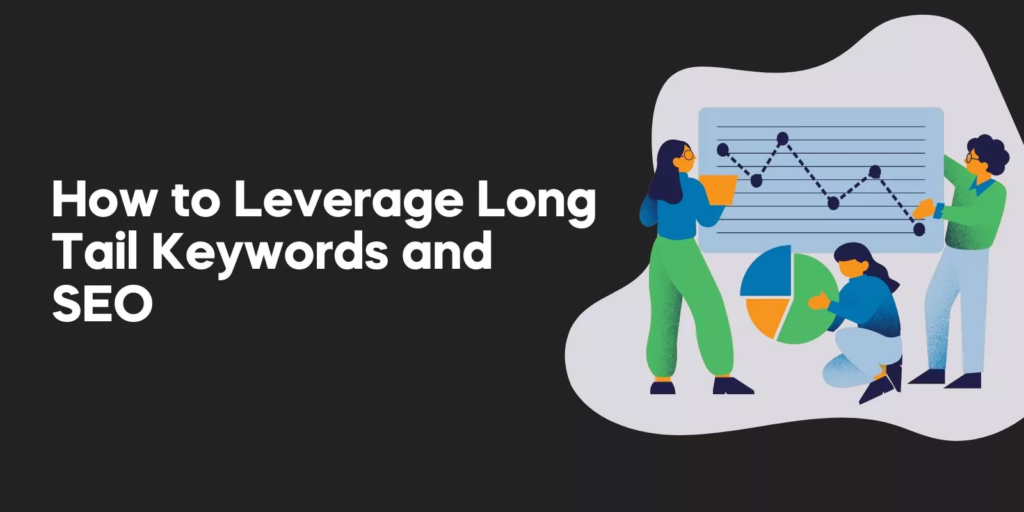
Leveraging Long-Tail Keywords for Meta Tags
When it comes to outranking competitors, targeting long-tail keywords in your meta tags can be a game-changer. Long-tail keywords are more specific and often carry higher intent, attracting users who are closer to making a decision. Research and identify relevant long-tail keywords related to your content, and strategically incorporate them into your title tags and meta descriptions.
Example: “Wholesome Gluten-Free Breakfast Recipes for a Healthier You – Start Your Day Right!”
Mobile-Friendly Design: A Must-Have
In today’s mobile-centric world, ensuring your website is mobile-friendly is non-negotiable. Google considers mobile-friendliness as a ranking factor, and a responsive design can significantly improve user experience, leading to better click-through rates. Test your website’s mobile responsiveness and optimize your meta tags accordingly to cater to mobile users.
The Power of Internal Linking
Internal linking is a potent SEO strategy that not only helps users navigate your website but also distributes the SEO value across various pages. Incorporate internal links in your content that connect to relevant articles, thereby increasing the time users spend on your website and signaling to search engines that your content is valuable.
Engaging Meta Tags for Social Sharing
In the age of social media sharing, your meta tags play a crucial role in determining how your content appears when shared. Craft engaging and descriptive meta tags that encourage users to click when your content is shared on platforms like Facebook, Twitter, and LinkedIn. Utilize Open Graph tags for Facebook and Twitter Cards for Twitter to control how your content is displayed.
Analyzing and Iterating for Success
Outranking competitors is an ongoing process that requires continuous analysis and iteration. Monitor your click-through rates, bounce rates, and search engine rankings. Utilize tools like Google Analytics and Search Console to gain insights into user behavior and adjust your meta tags accordingly. A/B test different variations of your title tags and meta descriptions to identify what resonates best with your audience.
Embracing Rich Media for Enhanced Engagement
Engagement is a key factor in SEO success. Incorporating rich media such as videos, infographics, and interactive elements can enhance user engagement, leading to longer time spent on your website. Utilize relevant rich media and optimize their associated meta tags to provide a more comprehensive and immersive user experience.

Establishing Authoritative Backlinks
In the realm of SEO, backlinks are a currency of credibility. Cultivating high-quality, authoritative backlinks from reputable sources can significantly boost your website’s ranking and authority. Collaborate with industry influencers, guest post on relevant blogs, and participate in discussions to earn backlinks that vouch for the value and trustworthiness of your content.
User-Intent Optimization: The Heart of SEO
Understanding user intent is pivotal in crafting meta tags that resonate with your audience. Google’s algorithm increasingly prioritizes providing users with content that aligns with their intent. Tailor your meta tags to cater to different user intents – informational, navigational, and transactional – to ensure your content appears in front of users who are looking for exactly what you offer.
Harnessing Local SEO for Visibility
If your business has a physical presence, local SEO can give you a competitive edge. Craft meta tags that incorporate location-based keywords to capture local search traffic. Utilize schema markup specific to local businesses to enhance your appearance in local search results, complete with essential information like opening hours, reviews, and directions.
Voice Search Optimization: A Future-Focused Approach
With the rise of voice assistants, optimizing for voice search is becoming paramount. Voice queries tend to be longer and more conversational. Tailor your meta tags to align with natural language queries. Anticipate and provide succinct answers to common questions users might ask, optimizing your content for voice search and gaining an edge in this emerging landscape.
EAT: Expertise, Authoritativeness, Trustworthiness
Google places immense importance on EAT – Expertise, Authoritativeness, and Trustworthiness – when evaluating content. Showcase your expertise in your field through well-crafted meta tags that reflect your authority. Incorporate testimonials, certifications, and awards to establish trustworthiness, signaling to both users and search engines that your content is of the highest quality.
Conclusion
Crafting meta tags that outperform your competitors is a dynamic endeavor that requires a holistic understanding of SEO and user behavior. By incorporating mobile page speed optimization, social proof, semantic SEO, video SEO, and a commitment to continuous content updates, you can create a content strategy that not only captivates your audience but also earns the favor of search engines. The path to outranking your competitors is paved with thoughtful meta tag optimization and an unwavering dedication to delivering value and relevance. As you implement these strategies, watch your website’s click-through rates soar and your position on Google’s search results climb to new heights.
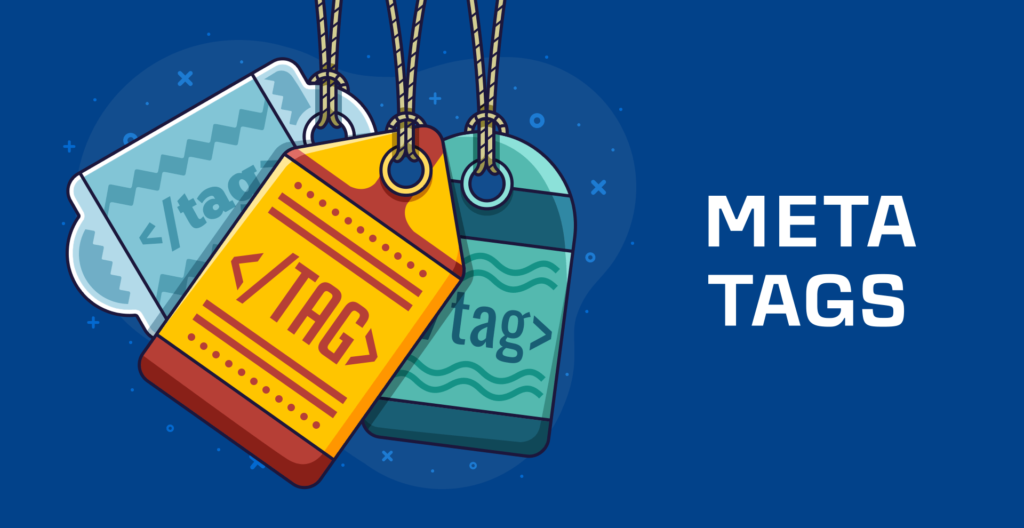
Frequently Asked Questions (FAQ) About Meta Tag Optimization
1. What are meta tags, and why are they important for SEO?
Meta tags are snippets of HTML code that provide information about a webpage’s content to both search engines and users. They include elements like title tags and meta descriptions. Meta tags play a crucial role in SEO by influencing how your content appears in search engine results and enticing users to click through to your website.
2. How do title tags impact SEO and click-through rates?
Title tags are the first thing users see on search engine results pages. Optimizing title tags with relevant keywords and engaging content can improve your website’s search engine ranking and increase click-through rates. A well-crafted title tag should accurately summarize your content while incorporating targeted keywords.
3. What is the purpose of meta descriptions?
Meta descriptions provide a brief overview of your webpage’s content. They influence users’ decision to click through to your website. An effective meta description should be concise, engaging, and include relevant keywords, enticing users to learn more by clicking on your link.
4. How can I optimize header tags for SEO?
Header tags, such as H1, H2, and H3, help structure your content for readability and SEO. Incorporate relevant keywords naturally in your headers to enhance their SEO impact. Create a logical hierarchy that guides readers through your content while making it more search engine-friendly.
5. What is the role of image alt text in SEO?
Image alt text is a description of an image that search engines can understand. It’s important for accessibility and SEO, as it helps search engines index your images and contributes to your overall content relevance. Use descriptive alt text that includes relevant keywords to enhance your content’s visibility.
6. How does structured data impact SEO?
Structured data, also known as schema markup, provides additional context to search engines about your content. It can lead to rich snippets in search results, which enhance the appearance of your listings. Utilize structured data to display specific information, such as reviews, ratings, and recipes, directly in search results.
7. How can I optimize for voice search?
Voice search optimization involves tailoring your content to match natural language queries users might ask their voice assistants. Craft meta tags that reflect conversational language and provide concise answers to common questions. This approach positions your content to rank well in voice search results.
8. What is EAT, and why is it important for SEO?
EAT stands for Expertise, Authoritativeness, and Trustworthiness. Google uses these factors to evaluate the quality of your content. Incorporate elements that showcase your expertise, such as certifications and awards, and build authoritativeness and trustworthiness through testimonials and industry recognition.
9. How does social proof impact click-through rates?
Social proof, such as user reviews and ratings, can be integrated into meta descriptions to establish credibility and encourage clicks. Positive social validation signals both users and search engines that your content is valuable and trustworthy.
10. Is continuous content updating necessary for SEO?
Yes, regularly updating your content and meta tags is crucial for maintaining a competitive edge. Freshness is a ranking factor, and up-to-date content demonstrates your commitment to providing relevant information. Regular updates keep your content current and engaging for users.
Remember, optimizing meta tags is an ongoing process that requires a combination of strategies to enhance your website’s visibility, user engagement, and search engine ranking.
Maximizing WordPress SEO for Top Google Rankings 2023
In today’s digital landscape, optimizing your WordPress website for search engines is imperative to achieve top rankings on Google. At Finest SEO Agency, we understand the critical importance of effective SEO strategies that enable your content to outshine competitors and attract organic traffic. Our team of experts has compiled a comprehensive guide to help you achieve unparalleled success in WordPress SEO.

Introduction
In the ever-evolving realm of online visibility, WordPress remains a powerful platform for building websites, but to truly outperform your competitors, your SEO game must be impeccable. This guide delves into advanced strategies and techniques that can propel your WordPress site to the forefront of search engine results pages (SERPs), leaving your competitors in the dust.
Also Check The Psychology of User Intent in SEO: Crafting Exceptional Online Experiences 2023Keyword Research: The Foundation of SEO Excellence
Conducting thorough keyword research is the first step towards SEO dominance. Utilize premium keyword research tools such as SEMrush, Ahrefs, or Moz to identify high-traffic, low-competition keywords relevant to your niche. Long-tail keywords are often the key to unlocking targeted traffic and outranking competitors. Develop a comprehensive list of these keywords to form the basis of your content strategy.
Technical Excellence: A Fast and Responsive Website
A seamless user experience is paramount for search engines and visitors alike. Ensure your WordPress website is optimized for speed and responsiveness. Minimize HTTP requests, leverage browser caching, and compress images without compromising quality. Implement a responsive design that adapts flawlessly to various screen sizes, enhancing user engagement and dwell time – factors Google values highly in its ranking algorithm.
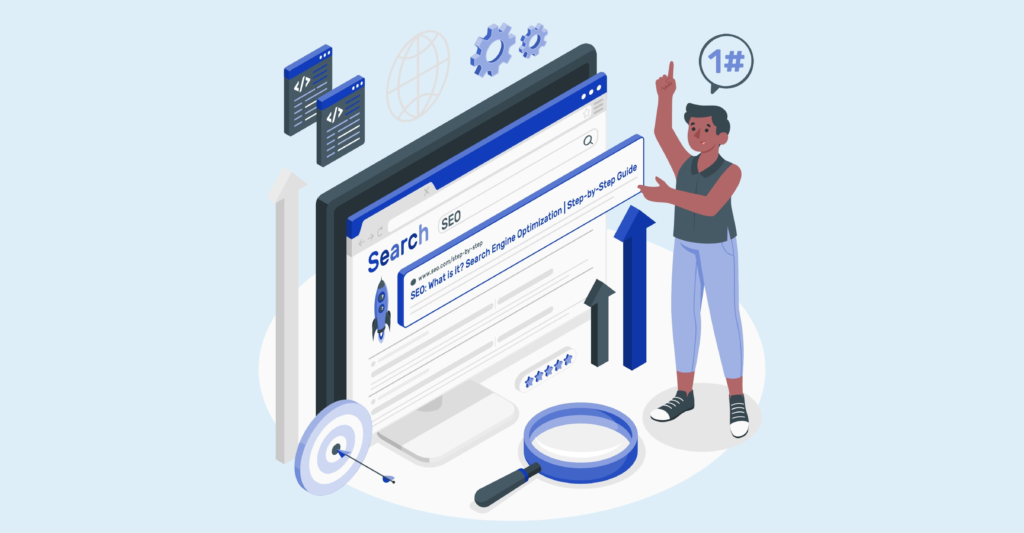
On-Page Optimization: Crafting Compelling Content
Creating high-quality, valuable content is the cornerstone of any successful SEO campaign. Develop detailed, informative articles that comprehensively cover your chosen topics. Incorporate your target keywords naturally within the content, paying attention to headings, subheadings, and the meta description. Aim to solve users’ problems and provide actionable insights, positioning your content as an authoritative resource.
Backlink Strategy: Quality over Quantity
Backlinks from authoritative websites are like gold in the SEO world. Focus on acquiring high-quality, relevant backlinks that bolster your website’s credibility. Collaborate with influencers, guest post on reputable blogs, and explore broken link building opportunities within your niche. A well-rounded backlink profile can significantly contribute to your site’s ability to outrank competitors.
User Engagement and Dwell Time
Google interprets user engagement as a signal of content relevance and quality. Keep visitors on your site longer by structuring your content for readability – short paragraphs, bullet points, and engaging visuals. Encourage social sharing and comments to foster a sense of community. Engaged users are more likely to convert and contribute positively to your site’s bounce rate and dwell time metrics.
Mobile Optimization: Capturing On-the-Go Traffic
With the majority of online searches occurring on mobile devices, optimizing your WordPress site for mobile is non-negotiable. Utilize responsive design principles, minimize intrusive interstitials, and ensure all interactive elements are easily accessible on mobile screens. Google’s mobile-first indexing approach underscores the significance of this aspect for outranking competitors.
Rich Snippets and Schema Markup
Enhance your content’s visibility and click-through rates by incorporating rich snippets and schema markup. These structured data formats provide search engines with detailed information about your content, allowing them to display compelling snippets in search results. Utilize tools like Google’s Structured Data Markup Helper to implement schema markup effectively.

Analyzing WordPress SEO Strategies for Unbeatable Rankings
In the fiercely competitive digital landscape, mastering WordPress SEO strategies is essential for securing top rankings on Google. At [Your Company Name], our team of seasoned SEO professionals is dedicated to providing you with insights that go beyond the ordinary. In this comprehensive guide, we reveal advanced tactics that can give your WordPress website the edge it needs to outrank even the toughest competitors.
Unveiling Advanced WordPress SEO Strategies
In the dynamic world of SEO, a well-rounded strategy is pivotal to ensuring your WordPress website doesn’t just blend in but excels. This guide delves into cutting-edge techniques and meticulous approaches that can catapult your site to the summit of search engine result pages (SERPs), leaving your competitors struggling to catch up.
The Power of Semantic Keywords
Keyword research goes beyond just finding relevant terms; it’s about understanding user intent and crafting content that fulfills those intentions. Leverage semantic keywords to create comprehensive, user-focused content that addresses a range of related topics. This approach not only satisfies search engines but also positions your site as an authoritative resource in your industry.
Advanced Technical Optimization
Striving for technical excellence is a hallmark of successful WordPress SEO. Auditing your site’s technical elements, such as crawl budget allocation, XML sitemaps, and structured data, can significantly impact your rankings. Create a strategic roadmap to address technical issues promptly and systematically, ensuring your website provides an exceptional user experience across all devices.
Crafting Pillar Content for Dominance
Pillar content is the backbone of an authoritative website. Develop comprehensive, cornerstone pieces that cover broad topics in depth. Support these pillars with a network of related articles, creating a content cluster that establishes your site’s expertise. This interconnected approach not only boosts SEO but also encourages users to explore your content further.

Harnessing the Potential of Video SEO
Incorporating videos into your content strategy can give you a unique advantage. Leverage video SEO by optimizing video titles, descriptions, and tags with relevant keywords. Host videos on your own server to drive traffic directly to your site and enhance user engagement. Videos provide an immersive experience that can captivate your audience and reduce bounce rates.
Voice Search Optimization
With the rise of voice-activated devices, optimizing for voice search is paramount. Craft conversational, long-tail keyword phrases that mirror natural language queries. FAQ pages can be a goldmine for voice search optimization, as they often provide concise answers to common questions. By addressing voice search queries, you position your content for featured snippets, enhancing your chances of outranking competitors.
Establishing E-A-T and Building Trust
Google places a premium on expertise, authoritativeness, and trustworthiness (E-A-T). Showcase your industry expertise by crafting detailed author profiles, complete with credentials and relevant experience. Curate high-quality, well-researched content that cites authoritative sources. Foster user trust by implementing SSL certificates, displaying customer reviews, and showcasing industry awards.

The Art of Semantic Keyword Mastery
Keyword research isn’t merely about identifying words; it’s about deciphering user intent and crafting content that satiates those intentions. Harness semantic keywords to craft comprehensive, user-centric content that addresses a spectrum of related themes. This technique not only appeases search engines but also positions your website as a haven of expertise within your industry.
Elevating Technical Prowess
Striving for technical excellence is the hallmark of triumphant WordPress SEO. Conduct a rigorous audit of your site’s technical facets—crawl budget allocation, XML sitemaps, and structured data—to wield substantial influence over your rankings. Construct a strategic roadmap to deftly address technical intricacies, ensuring your website delivers an exceptional user experience across diverse devices.
Forging Pillar Content for Dominance
Pillar content forms the bedrock of an authoritative website. Craft comprehensive cornerstone pieces that delve profoundly into broad subjects. Bolster these pillars with an intricate network of interlinked articles, forming a content cluster that solidifies your website’s mastery. This approach not only heightens SEO potential but also beckons users to delve deeper into your offerings.
Unveiling the Potential of Video SEO
Incorporating videos into your content arsenal bestows a unique advantage. Employ video SEO to optimize titles, descriptions, and tags with pertinent keywords. Hosting videos on your server channels traffic directly to your website, amplifying user engagement. Videos offer an immersive experience that captures your audience, effectively diminishing bounce rates.
Conquering Voice Search Optimization
As voice-activated devices surge in popularity, catering to voice search is imperative. Craft colloquial, long-tail keyword phrases that mirror natural language queries. FAQ pages emerge as a treasure trove for voice search optimization, as they succinctly answer common questions. Addressing voice search queries situates your content for featured snippets, significantly enhancing chances of outclassing competitors.
Establishing E-A-T and Fostering Trust
Expertise, authoritativeness, and trustworthiness (E-A-T) are Google’s cornerstones. Flaunt industry expertise through elaborate author profiles, replete with credentials and relevant experiences. Curate premium, extensively researched content with citations from authoritative sources. Cultivate user trust by integrating SSL certificates, showcasing customer reviews, and displaying industry accolades.
Conclusion: Forging Your SEO Triumph
In the race for Google’s zenith, an innovative and multifaceted approach to WordPress SEO is paramount. By assimilating semantic keywords, mastering technical prowess, erecting pillar content, and embracing emerging frontiers like video SEO and voice search, you position your website as an indomitable force in the digital domain. This is but a waypoint—the odyssey continues with perpetual analysis and evolution, ensuring your reign over search engine algorithms. Emerge as a paragon of WordPress prowess, eclipsing competitors and claiming your throne as a vanguard in your industry.

Frequently Asked Questions about WordPress SEO Mastery
Welcome to the FAQ section of our comprehensive guide on mastering WordPress SEO to outrank competitors. Here, we address common inquiries to provide you with clarity and actionable insights. Let’s delve into these frequently asked questions and equip you with the knowledge you need to conquer the world of SEO.
1. What is WordPress SEO, and why is it important?
WordPress SEO refers to the practice of optimizing your WordPress website to improve its visibility on search engines like Google. It’s crucial because higher visibility leads to increased organic traffic, which can ultimately drive more conversions and business growth.
2. How do semantic keywords differ from regular keywords?
While regular keywords focus on specific terms, semantic keywords consider the context and user intent behind those terms. They capture the natural language that users use in search queries, allowing you to create content that better matches their needs.
3. What role does technical optimization play in SEO?
Technical optimization ensures that your website is accessible, fast, and user-friendly. It includes aspects like improving site speed, using proper HTML tags, creating an XML sitemap, and implementing structured data. These factors impact both user experience and search engine rankings.
4. Can you explain the concept of pillar content?
Pillar content involves creating comprehensive, cornerstone pieces that cover broad topics extensively. These pieces are supported by related articles, forming a content cluster. This approach not only demonstrates your expertise but also improves internal linking and SEO.
5. How does video SEO contribute to better rankings?
Video SEO involves optimizing videos for search engines. By using relevant keywords in titles, descriptions, and tags, and hosting videos on your website, you can improve your chances of ranking high on both video platforms and regular search results.
6. Why is voice search optimization important?
With the rise of voice-activated devices, optimizing for voice search is crucial. Voice queries tend to be more conversational and longer, requiring you to craft content that addresses these natural language queries. This optimization can help you secure featured snippets and gain a competitive edge.
7. How can I establish E-A-T (Expertise, Authoritativeness, Trustworthiness)?
To establish E-A-T, showcase your expertise through author profiles with credentials, write high-quality content that cites reputable sources, and foster trust by using SSL certificates, displaying customer reviews, and highlighting industry awards. Google values these factors when assessing a website’s quality.
8. What tools can I use to monitor my website’s performance?
Tools like Google Analytics and Google Search Console are invaluable for monitoring your website’s performance. Google Analytics provides insights into user behavior, traffic sources, and more, while Google Search Console offers data on search visibility, indexing issues, and keyword performance.
9. Is SEO a one-time effort, or do I need to continuously work on it?
SEO is an ongoing process. Search engines update their algorithms, competitors adapt, and user behavior changes. To maintain your rankings and stay ahead of competitors, you need to regularly analyze your performance, adapt your strategies, and stay informed about industry trends.
10. Can I implement all these strategies myself, or should I seek professional help?
While it’s possible to implement these strategies on your own, the complexities of SEO can be overwhelming. Working with experienced SEO professionals can provide you with expert guidance, save time, and ensure that your efforts are aligned with the latest industry best practices.
We hope these answers have shed light on your questions about mastering WordPress SEO. Feel free to explore our guide further to gain a deeper understanding of these strategies and their implementation.Crafting an Unbeatable SEO Content Calendar 2023
In the realm of digital marketing, mastering the art of search engine optimization (SEO) is paramount to achieving online success. One of the cornerstones of a successful SEO strategy is the creation and implementation of an effective SEO content calendar. At Finest SEO Agency, we understand the critical role that a well-structured content calendar plays in boosting your online presence and driving organic traffic. In this comprehensive guide, we unveil the strategies and methodologies that set our SEO content calendar apart, propelling your website to outrank competitors and secure top positions on Google’s search results.

Understanding the Power of an SEO Content Calendar
An SEO content calendar is more than just a schedule; it’s a strategic roadmap that guides your content creation efforts, aligning them with your target audience’s interests and search trends. By organizing your content creation process, you ensure consistency, relevancy, and a higher chance of engaging your audience.
Also Check The Psychology of User Intent in SEO: Crafting Exceptional Online Experiences 2023
Keyword Research: Laying the Foundation
Effective SEO content begins with in-depth keyword research. Our meticulous approach involves identifying high-potential keywords relevant to your industry, services, or products. Using advanced keyword research tools and techniques, we uncover not only primary keywords but also long-tail variations that address specific search intents.
Mapping Content to the Customer Journey
Diversifying your content to cater to different stages of the customer journey is a game-changer. From awareness to consideration and ultimately decision-making, our SEO content calendar integrates content that resonates with users at every step. This strategic alignment enhances user experience and conversion rates.
Creating Comprehensive and Authoritative Content
Quality surpasses quantity. Our content creation strategy focuses on crafting comprehensive, well-researched, and authoritative pieces that provide genuine value to your audience. This approach not only satisfies user intent but also establishes your website as a go-to resource in your niche.

Optimizing On-Page Elements
On-page optimization is where the magic happens. We meticulously optimize each piece of content, incorporating target keywords naturally into titles, headings, meta descriptions, and the body. This ensures that search engines recognize the relevance of your content to user queries.
Harnessing the Power of Visuals
Incorporating visuals is crucial in today’s content landscape. Visuals enhance engagement, break up lengthy content, and convey complex information effortlessly. Here’s an example of a mermaid syntax diagram depicting the interaction between a user and a well-optimized SEO content calendar:
Consistency: The Key to Success
Consistency is non-negotiable. Our SEO content calendar ensures a steady stream of fresh, valuable content. Search engines reward consistency by crawling your site more frequently, resulting in improved indexation and ultimately, higher rankings.
Data-Driven Refinement
We don’t just set it and forget it. Our SEO content calendar is a dynamic tool that adapts to the ever-evolving digital landscape. Regular performance analysis allows us to identify content that resonates most with your audience, enabling us to refine our approach for maximum impact.

Mastering SEO Content: Your Path to Digital Dominance
Welcome to At Finest SEO Agency, where exceptional SEO and captivating content collide to elevate your online presence. Our commitment to crafting unparalleled SEO content empowers you to not only compete but surpass your rivals in the digital landscape. In this definitive guide, we unveil the strategies and practices that position our SEO content a cut above the rest, propelling your website to the pinnacle of Google’s search results.
Decoding the SEO Content Advantage
At the heart of a triumphant digital strategy lies the mastery of search engine optimization (SEO) content. Beyond mere keywords, it’s about curating an immersive experience that captivates users while aligning seamlessly with search engine algorithms.
Unveiling the Blueprint: A Robust SEO Content Calendar
Embark on a transformative journey with our meticulously designed SEO content calendar. More than just a schedule, it’s a strategic masterpiece that guides every facet of content creation, fortifying your brand’s online presence.
Keyword Alchemy: Forging Your Digital Identity
Our unrivaled expertise begins with an intricate dance of keywords. Through exhaustive research, we unearth the keywords that resonate with your target audience, forging a digital identity that stands out amidst the noise.
Crafting Content with Purpose
At Finest SEO Agency,, we believe in content with a purpose. Every piece is a work of art, meticulously structured to cater to your audience’s needs and desires. With a firm grasp of user intent, we create content that informs, educates, and entices.

Seamless Fusion of Creativity and Optimization
In the realm of SEO content, creativity and optimization go hand in hand. Our content creators are masters of this delicate fusion, seamlessly interweaving keywords and ideas to craft narratives that both Google and your audience adore.
Elevating Engagement through Visual Storytelling
The power of visuals is undeniable. Our content calendar leverages the might of mermaid syntax diagrams and other engaging visual elements to enhance user experience, making complex concepts a breeze to understand.
A Symphony of Consistency and Quality
Consistency isn’t just a virtue; it’s a strategy. Our SEO content calendar ensures a harmonious symphony of consistent, high-quality content that keeps search engines and audiences alike coming back for more.
The Data-Driven Advantage
Data isn’t just numbers; it’s the compass guiding our content ship. Our calendar is in a constant state of evolution, adapting to the ever-shifting digital currents. Through rigorous analysis, we refine our approach, ensuring your content remains at the forefront of trends.
The Ascension to SEO Eminence
In a digital realm teeming with contenders, reaching the summit requires unparalleled dedication. At [YourCompany], we channel our expertise into each piece, sculpting content that doesn’t just compete, but thrives, securing the prime real estate atop search results.
Partner with At Finest SEO Agency for Digital Supremacy
Elevate your digital journey with a partner that understands the nuances of SEO content like no other. Join hands with [YourCompany] and let’s script a success story that outshines the competition, one keyword at a time.
Remember, in the sprawling landscape of the internet, supremacy belongs to those who wield the pen of innovation and the sword of SEO mastery. Contact us today and embark on a quest for digital dominance.

Frequently Asked Questions (FAQ) – SEO Content Mastery
Q1: What is an SEO content calendar, and why is it important?
An SEO content calendar is a strategic plan that outlines when and what type of content will be created and published to align with your digital marketing goals. It ensures consistent content creation, targeted keyword integration, and timely distribution, which in turn boosts your website’s search engine rankings and organic traffic.
Q2: How does keyword research contribute to a successful SEO content calendar?
Keyword research is the foundation of an effective SEO content calendar. By identifying relevant keywords and phrases that users search for, you can tailor your content to address their needs and capture their attention. Strategic keyword integration helps search engines understand the context of your content and match it with user queries.
Q3: Can you explain the role of user intent in crafting SEO content?
Understanding user intent is paramount. It involves deciphering the reason behind a search query. By aligning your content with various stages of the customer journey, from seeking information to making a purchase decision, you create content that resonates with users, leading to higher engagement and conversions.
Q4: How do visuals impact SEO content creation?
Visuals are essential components of SEO content. They break up lengthy text, make content more engaging, and can be optimized for search engines. Using mermaid syntax diagrams and other visual aids enhances user experience, encourages longer page visits, and promotes social sharing – all of which contribute positively to SEO rankings.
Q5: Why is consistency emphasized in an SEO content calendar?
Consistency is a key driver of SEO success. Search engines reward websites that consistently produce high-quality, relevant content by crawling and indexing them more frequently. This results in improved visibility, higher rankings, and an increased likelihood of capturing users’ attention.
Q6: How does data analysis refine an SEO content calendar?
Data-driven refinement is essential to keep your SEO content strategy effective. By analyzing metrics such as click-through rates, bounce rates, and user engagement, you gain insights into what works and what needs improvement. This allows you to adjust your content calendar to create content that resonates with your audience and aligns with current trends.
Q7: Can an effective SEO content calendar outrank competitors?
Absolutely. An SEO content calendar that integrates comprehensive keyword research, user intent understanding, high-quality content creation, and consistent publishing can give you a competitive edge. By addressing user needs effectively and positioning your website as an authority in your niche, you can surpass competitors in search engine rankings.
Q8: How can [YourCompany] help me master SEO content creation?
At [YourCompany], we specialize in crafting SEO content that excels. Our team of experts combines in-depth keyword research, user intent analysis, engaging content creation, and data-driven refinement to build a content calendar tailored to your goals. With our guidance, you can elevate your digital presence, outrank competitors, and achieve SEO supremacy.
Q9: Is an effective SEO content calendar a one-time effort?
No, it’s an ongoing process. The digital landscape evolves, user behaviors change, and search engine algorithms update. A successful SEO content calendar requires continuous monitoring, analysis, and adaptation to stay ahead of the curve and maintain top search engine rankings.
Q10: How can I get started with [YourCompany]’s SEO content services?
Embarking on the journey to SEO excellence with [YourCompany] is simple. Reach out to us through our website or contact information, and our team of SEO experts will guide you through the process. We’ll analyze your needs, strategize a customized content calendar, and work collaboratively to elevate your online presence and outrank competitors.
The Psychology of User Intent in SEO: Crafting Exceptional Online Experiences 2023
In the realm of digital landscapes, where websites compete for attention and visibility, understanding user intent has emerged as a pivotal factor in optimizing search engine rankings. Welcome to an insightful exploration of “The Psychology of SEO: Understanding User Intent,” where we delve into the core concepts of user intent, its significance, and the strategic approach to crafting content that not only resonates but outperforms in search engine rankings.
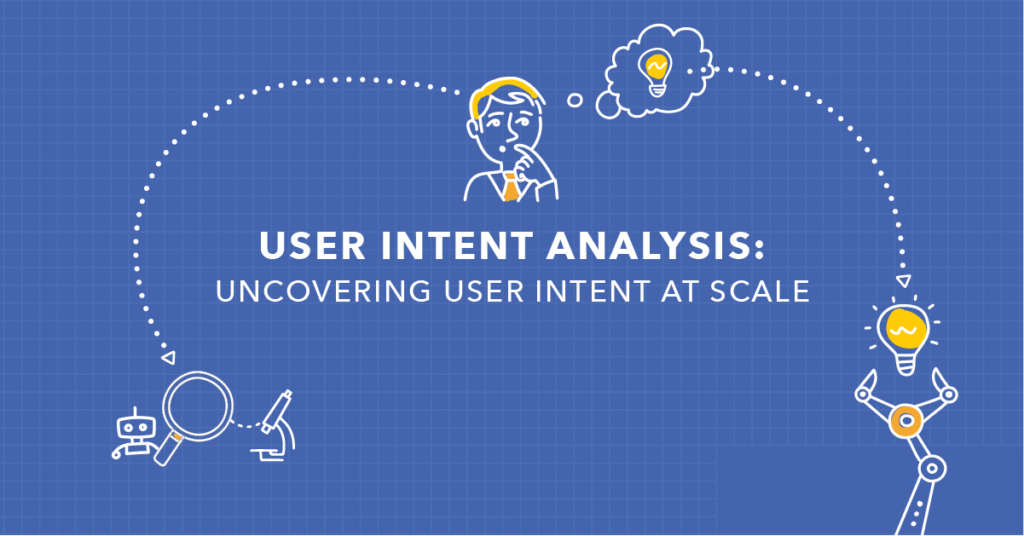
Unveiling User Intent: Decoding the Searcher’s Mind
User intent, the driving force behind online searches, is the crux upon which successful SEO strategies hinge. It is the art of decoding the searcher’s mind, understanding their needs, wants, and motivations when they enter a query into a search engine. User intent primarily falls into four categories:
- Informational Intent: When users seek information or answers to their queries. Example: “How does photosynthesis work?”
- Navigational Intent: When users are looking for a specific website or online destination. Example: “Facebook login page.”
- Commercial Intent: When users are in the research phase before making a purchase. Example: “Best budget smartphones.”
- Transactional Intent: When users are ready to make a purchase or take a specific action. Example: “Buy iPhone 13 online.”
Understanding these intent categories allows us to align our content with user expectations, resulting in higher engagement, longer dwell times, and ultimately improved search rankings.
Also Check The Art of SEO Copywriting
The Power of Relevant Content: Crafting a User-Centric Experience
To outrank competitors, we must transcend conventional content creation and embark on a journey of crafting user-centric experiences. The secret lies in creating content that resonates with the user’s intent, offering value and relevance. This can be achieved through:
- Thorough Research: Dive deep into the topic to understand all nuances and dimensions related to the user’s query.
- Comprehensive Coverage: Offer comprehensive information that addresses various aspects of the query, leaving no stone unturned.
- Clear Formatting: Present content in a structured manner, using subheadings, bullet points, and visuals for easy consumption.
- Engaging Language: Use a tone and language that speaks directly to the user, establishing a connection.
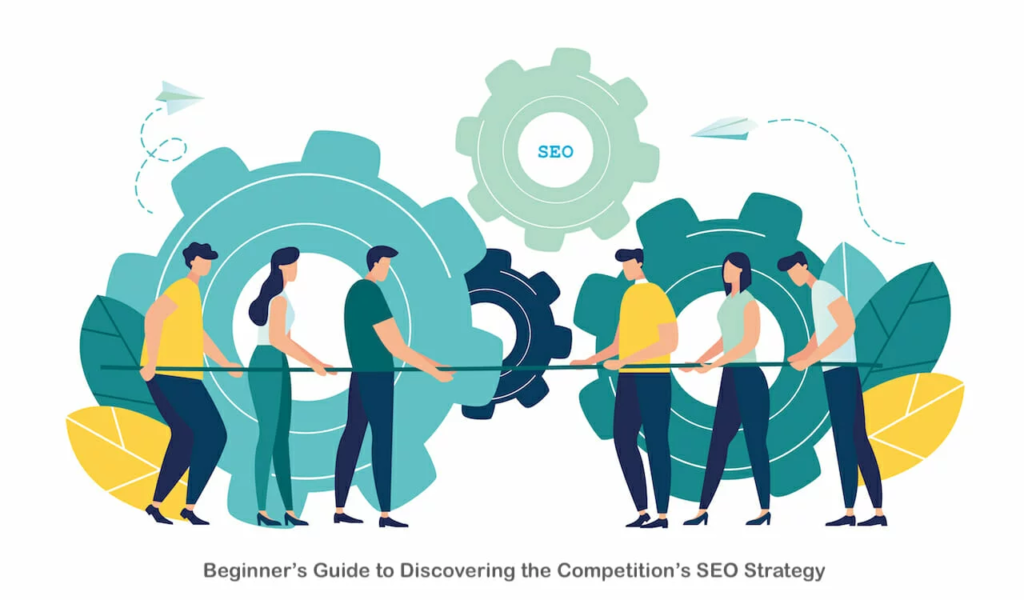
The SEO Game Plan: Strategically Outranking the Competition
To outrank the article titled “The Psychology of SEO: Understanding User Intent,” our strategy involves combining the principles of user intent with technical SEO excellence:
1. Keyword Optimization
Integrate target keywords strategically within the content, focusing on natural placement that enhances readability.
2. Semantic SEO
Leverage semantic SEO by incorporating related keywords and phrases to provide a comprehensive understanding of the topic.
3. Quality Backlinks
Secure high-quality backlinks from authoritative sources within the industry to signal credibility to search engines.
4. Page Speed and Mobile Optimization
Ensure the website loads swiftly and is optimized for mobile devices, enhancing user experience and search engine rankings.
5. Rich Media Integration
Incorporate images, infographics, and even videos to enrich the content and engage users effectively.

Elevating User Experience: A Holistic Approach to SEO Dominance
In the dynamic realm of online engagement, where user experience reigns supreme, mastering the intricacies of user intent is not just a strategy—it’s an imperative. We present a comprehensive guide to conquering search engine rankings with an unparallelled understanding of user intent, leaving no room for uncertainty or guesswork.
Deciphering User Intent: The Essence of Engagement
User intent isn’t just a buzzword; it’s the very essence of every online interaction. It’s the catalyst that propels users from search engines to your digital doorstep. Decoding user intent requires finesse and a keen understanding of their underlying motivations. We categorize user intent into four distinct dimensions:
- Informational Intent: Satisfy users seeking knowledge and insights.
- Navigational Intent: Facilitate users looking for specific online destinations.
- Commercial Intent: Guide users in their purchase research journey.
- Transactional Intent: Seal the deal with users ready to take action.
Each intent dimension presents an opportunity to resonate deeply and cater to diverse user needs. With this understanding, you lay the foundation for an exceptional user experience.
The Alchemy of Content: Crafting Value-Rich Experiences
Outranking competition isn’t a mere ambition; it’s a pursuit guided by content that captivates and educates. Crafting such content requires an alchemical blend of meticulous planning, strategic insight, and creative finesse:
- Research Mastery: Immersion in the subject matter elevates your grasp, enabling comprehensive coverage.
- Engagement Architecture: Employ a clear hierarchy with subheadings, enabling easy navigation and enhancing engagement.
- Visual Storytelling: Images, diagrams, and infographics augment the narrative, ensuring visual learners are catered to.

The Strategic Symphony: Conquering SEO with User Intent
To outperform your competitors, a symphony of strategic maneuvers is essential, harmonizing with the melody of user intent:
1. Harmonious Keyword Integration
Embrace keywords that seamlessly integrate with the content, enhancing relevance without disrupting the flow.
2. Semantic Brilliance
Augment your content’s semantic prowess with related keywords, expanding the content’s contextual richness.
3. Eminence in Backlinks
Forge relationships with authoritative domains, amassing backlinks that proclaim your content’s worth to search engines.
4. Speed and Responsiveness
A swift website, optimized for both desktop and mobile, not only delights users but entices search engines.
5. Multimedia Symphony
Enrich the content experience with a multimedia ensemble—images, videos, and interactive elements—for greater resonance.

Elevating User Experience: A Holistic Approach to SEO Mastery
In the ever-evolving landscape of online engagement, where user experience is paramount, mastering the intricacies of user intent isn’t just a strategy – it’s a necessity. Here, we present an exhaustive guide to not only understanding user intent but leveraging it to secure a commanding position in search engine rankings.
Unveiling User Intent: The Key to Unleashing SEO Potential
The core of effective SEO lies in deciphering user intent, the driving force behind every online query. User intent encapsulates the user’s underlying purpose when initiating a search, and it can be classified into four main categories:
- Informational Intent: Users seeking answers, explanations, or information.
- Navigational Intent: Users aiming to find a specific website or online location.
- Commercial Intent: Users in the research phase before making a purchase decision.
- Transactional Intent: Users ready to take action, such as making a purchase or signing up.
Understanding these intent categories forms the bedrock of a successful SEO strategy, enabling you to tailor your content to match user expectations effectively.

The Art of Crafted Content: Forging Connections through Value
Outranking competitors requires more than just keyword optimization; it demands crafting content that forges a genuine connection with users. Achieving this level of engagement hinges on several crucial aspects:
- In-Depth Research: Delve deep into the topic, leaving no stone unturned. Comprehensive research is the cornerstone of valuable content.
- Structural Precision: Organize content with clear subheadings that guide users through the material, enhancing readability.
- Engaging Language: Use a tone that resonates with your target audience, establishing a rapport and fostering trust.
Strategic Maneuvers: Surpassing Competitors through SEO Finesse
To rise above the competition, a strategic approach is imperative. Let’s delve into the key maneuvers that will propel your content to the forefront of search engine rankings:
1. Strategic Keyword Integration
Incorporate target keywords seamlessly, avoiding overuse while ensuring they naturally fit within the context.
2. Semantic Enrichment
Expand your content’s relevance by including related keywords that provide a comprehensive perspective on the topic.
3. Authority Backlinks
Forge connections with authoritative websites, securing quality backlinks that validate your content’s credibility.
4. Optimized Performance
Enhance your website’s speed and responsiveness, providing users with a seamless browsing experience across devices.
5. Visual Augmentation
Integrate visual aids such as images, diagrams, and videos to augment your content’s appeal and engagement.

Conclusion: Shaping SEO Triumph through User Intent Precision
In the grand tapestry of digital conquest, user intent stands as the pivotal thread. Achieving dominance in search engine rankings necessitates weaving content that aligns with users’ desires and aspirations. As you traverse this journey, remember that SEO excellence isn’t just about algorithms; it’s about recognizing the human element and addressing it comprehensively. By crafting content that resonates with users on a profound level, you establish an unassailable stronghold in the realm of online visibility.
FAQ: Unveiling the Psychology of SEO and User Intent
Welcome to the FAQ section, where we address your burning questions about the dynamic intersection of SEO and user intent. Here, we aim to provide clarity and insight into this intricate realm, allowing you to harness its potential for optimal online success.
Q1: What is user intent, and why is it crucial for SEO?
A: User intent refers to the underlying motivation behind a user’s search query. It’s essential for SEO because understanding user intent helps tailor content to match what users are looking for, leading to higher engagement, longer dwell times, and improved search engine rankings.
Q2: How do I categorize different types of user intent?
A: User intent can be categorized into four main types: informational intent (seeking knowledge), navigational intent (looking for a specific website), commercial intent (researching products/services), and transactional intent (ready to take action). Each type guides content creation to fulfill user needs effectively.
Q3: How can I craft content that resonates with user intent?
A: Crafting resonant content involves in-depth research, comprehensive coverage, clear formatting with subheadings, and engaging language. By aligning your content with user intent, you provide value and relevance, enhancing the user experience.
Q4: What strategies can I employ to outrank competitors in search engine rankings?
A: To surpass competitors, focus on keyword optimization, semantic SEO by incorporating related keywords, securing quality backlinks, optimizing page speed and mobile responsiveness, and integrating rich media such as images and videos to enhance user engagement.
Q5: How does semantic SEO contribute to better search rankings?
A: Semantic SEO involves using related keywords and phrases to create a more comprehensive understanding of the topic. This not only provides a deeper context for users but also signals to search engines that your content covers a broader spectrum, potentially improving rankings.
Q6: What role do backlinks play in SEO success?
A: Backlinks are external links pointing to your website from other authoritative sites. They serve as endorsements of your content’s credibility and relevance, which search engines consider when determining your website’s ranking.
Q7: How can I ensure a mobile-friendly website for better rankings?
A: Optimizing your website for mobile devices is crucial. Ensure responsive design, fast loading times, easy navigation, and a seamless browsing experience on smartphones and tablets.
Q8: Can visual elements like images and diagrams impact SEO?
A: Yes, visual elements enhance user experience and engagement, which can indirectly impact SEO. When users spend more time on your page due to compelling visuals, it signals to search engines that your content is valuable and relevant.
Q9: Is there a specific keyword density I should target for optimal SEO?
A: Rather than fixating on keyword density, focus on natural and meaningful integration of keywords within your content. The emphasis should be on providing value to the reader while maintaining keyword relevance.
Q10: How can I gauge the effectiveness of my SEO efforts related to user intent?
A: Monitor key metrics such as organic traffic, bounce rate, dwell time, and conversion rates. These metrics can provide insights into how well your content aligns with user intent and how it affects user behavior.
Remember, the dynamic landscape of SEO and user intent continually evolves. Adapting and refining your strategies based on user behavior and algorithm updates is crucial for sustained success in outranking competitors and establishing a robust online presence.
Understanding the Power of Link Pyramids in SEO 2023
In the realm of search engine optimization (SEO), strategies and techniques are continually evolving to keep up with the dynamic algorithms of search engines like Google. One approach that has gained significant traction in recent times is the concept of a Link Pyramid. In this comprehensive guide, we delve into the intricacies of link pyramids, their purpose, and how you can leverage them to boost your website’s online visibility and authority.
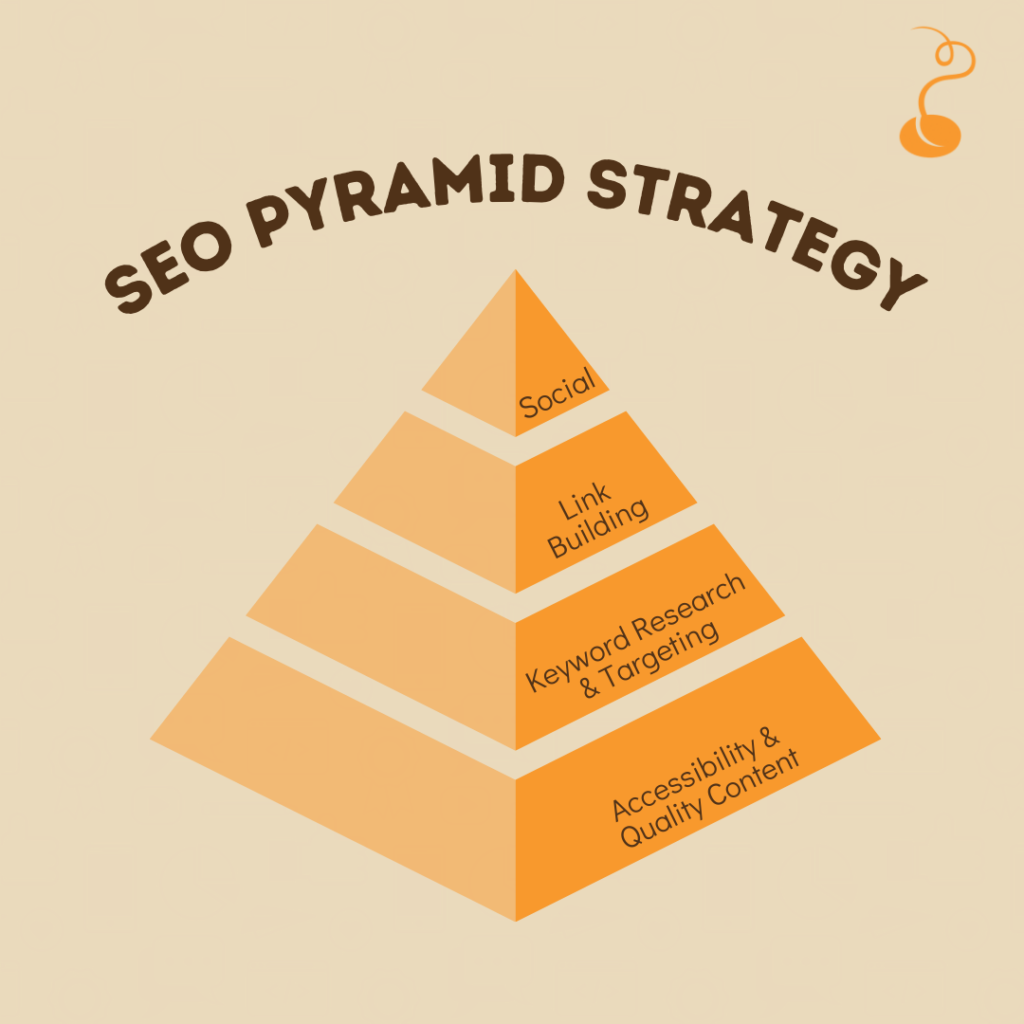
What is a Link Pyramid? Unveiling the Structure
A Link Pyramid is a strategic framework for building backlinks that follows a tiered structure, resembling that of a pyramid. The primary objective behind this technique is to establish a strong and authoritative link profile for your website. The structure typically comprises three tiers:
- Tier 1 – The Base: At the base of the pyramid, you have the highest quality and most authoritative backlinks. These links originate from well-established and reputable websites. The focus here is on quality over quantity, as these backlinks serve as the foundation of the pyramid.
- Tier 2 – The Middle Layer: Moving up the pyramid, the second tier consists of backlinks that support the ones in the first tier. These links are usually from diverse sources and can include blog comments, social bookmarks, and forum posts. While the authority of these links may be slightly lower, they contribute to the overall strength of the pyramid.
- Tier 3 – The Top Apex: The third and final tier, often the largest in terms of quantity, consists of links pointing to the second-tier backlinks. These can be from various sources like web 2.0 properties, article directories, and less authoritative blogs. The purpose of this tier is to boost the authority of the second-tier links, which, in turn, bolster the authority of the first-tier links.
Also Check Achieving Top SEO Rankings: The Ultimate Guide to Dominating the Search Results 2023
The Purpose and Benefits of a Link Pyramid
Link pyramids are designed to serve multiple purposes that collectively enhance your website’s SEO efforts:
- Diverse Backlink Profile: By incorporating backlinks from various sources and platforms, a link pyramid creates a natural and diverse profile, signaling to search engines the legitimacy of your website.
- Authority Amplification: The tiered structure of the pyramid enables the flow of authority from lower-tier links to higher-tier ones, eventually strengthening the most crucial links that directly point to your website.
- Mitigating Risks: As you distribute backlinks across different tiers, the risk of over-optimization or potential penalties from search engines is minimized. This balanced approach ensures a safer SEO strategy.
- Gradual Indexing: The tiered approach allows search engines to discover and index your backlinks gradually, mimicking a natural link-building process and avoiding any sudden spikes that could raise suspicions.

Implementing a Successful Link Pyramid Strategy
Creating an effective link pyramid necessitates a systematic approach:
- Keyword Research: Identify relevant keywords that align with your content and target audience. These keywords will guide your link-building efforts.
- Tier Planning: Strategically plan your tiers, ensuring the first tier consists of high-authority sites, the second tier supports them, and the third tier amplifies their strength.
- Content Quality: Craft high-quality, engaging content for each tier, including informative articles, blog posts, and even visual content like infographics.
- Natural Progression: Focus on a gradual and organic progression of building backlinks. Avoid sudden spikes that might trigger search engine suspicion.
- Consistent Monitoring: Regularly assess the performance of your link pyramid using SEO tools. Replace or update links as needed to maintain relevancy and authority.

Unveiling the Link Pyramid Strategy: Elevate Your SEO Game
Welcome to our comprehensive guide on leveraging the powerful Link Pyramid strategy to enhance your website’s SEO prowess and dominate the digital landscape. As leaders in the field of search engine optimization, we are excited to share with you a strategic approach that has the potential to outperform competitors and secure top rankings on Google. Let’s dive into the world of Link Pyramids and how they can revolutionize your online presence.
Understanding the Link Pyramid Strategy
In the dynamic world of SEO, staying ahead demands innovative approaches, and the Link Pyramid strategy is a gem in this realm. The concept is simple yet profoundly effective. Imagine building a strong foundation for your website’s backlink profile, gradually amplifying its authority, and establishing a diverse range of connections that captivate search engines. This is the essence of the Link Pyramid.

The Tiered Structure: Laying the Foundation for Success
At the core of the Link Pyramid strategy lies its unique tiered structure. Picture a pyramid with three distinct tiers, each playing a crucial role in fortifying your website’s online authority:
Tier 1 – The Bedrock of Authority
At the base of the pyramid, Tier 1 consists of top-tier, high authority websites that act as the bedrock of your backlink profile. These are the cream of the crop, reputable and trustworthy sources that lend your website credibility and trustworthiness in the eyes of search engines. Think of these backlinks as the pillars upon which the rest of the pyramid stands.
Tier 2 – Strengthening the Foundation
Moving up the pyramid, we encounter Tier 2, the supporting layer that bolsters the authority of Tier 1 backlinks. These links originate from a diverse array of platforms, including blog comments, social bookmarks, and forums. They provide a natural link-building progression, indicating to search engines that your website is gaining traction and recognition across various online communities.
Tier 3 – The Apex of Amplification
Finally, Tier 3 forms the apex of the pyramid, consisting of links that amplify the strength of Tier 2 backlinks. These can be from sources like web 2.0 properties, article directories, and less authoritative blogs. The purpose here is twofold: to further enhance the authority of Tier 2 links and to create a dynamic and nuanced backlink profile that mimics natural growth.

Benefits Beyond Bounds: Why Choose the Link Pyramid Strategy
The Link Pyramid strategy isn’t just about a fancy structure – it offers tangible benefits that can redefine your website’s SEO journey:
- Diversified Link Profile: By encompassing links from different sources and tiers, the Link Pyramid strategy paints a genuine and diverse picture of your website’s popularity.
- Authority Amplification: The tiered structure ensures that authority trickles up, ultimately solidifying the credibility of your website in the eyes of search engines.
- Risk Mitigation: With links distributed strategically across tiers, you minimize the risk of triggering search engine penalties or over-optimization alarms.
- Natural Progression: The gradual link-building process mirrors natural growth, preventing sudden spikes that could raise suspicions.
Implementing the Link Pyramid: A Strategic Approach
To harness the full potential of the Link Pyramid strategy, consider these steps:
- Keyword Research: Identify keywords that align with your content and audience. These keywords will steer your link-building efforts.
- Tier Planning: Devise a comprehensive plan for each tier. Tier 1 should include high authority sites, Tier 2 diverse platforms, and Tier 3 amplification sources.
- Craft Quality Content: Develop engaging content for each tier – articles, blog posts, and even visually appealing infographics.
- Organic Progression: Strive for a gradual, organic link-building rhythm. Avoid sudden spikes that might appear unnatural.
- Regular Assessment: Continuously monitor your link pyramid’s performance through SEO tools. Replace or update links as needed to ensure relevance and authority.
Conclusion: Your Path to SEO Excellence
In the fierce arena of SEO, the Link Pyramid strategy stands tall as a game-changer. Through meticulous tier planning, diversified backlinks, and gradual authority amplification, you possess the tools to ascend the search engine rankings. Remember, the Link Pyramid is just one facet of a comprehensive SEO strategy that embraces quality content, technical optimization, and user engagement. With this guide in hand, you’re equipped to outmaneuver competitors and claim your rightful place atop Google’s search results.
Frequently Asked Questions (FAQ)
Welcome to our FAQ section, where we address common queries about the Link Pyramid strategy and its impact on your website’s SEO. If you have questions, we’ve got answers. Let’s dive in!

Q1: What exactly is a Link Pyramid? A1: A Link Pyramid is a structured approach to building backlinks that involves creating tiers of links with varying degrees of authority. The foundation tier contains high-quality, authoritative links, while the subsequent tiers support and amplify their strength.
Q2: Why should I consider using the Link Pyramid strategy? A2: The Link Pyramid strategy offers several benefits, including a diversified link profile, gradual authority amplification, risk mitigation against search engine penalties, and a natural link-building progression that mirrors organic growth.
Q3: Can I use any type of backlink for each tier? A3: While you can use different types of backlinks for each tier, it’s crucial to maintain relevancy and quality. Tier 1 should consist of high-authority sites, Tier 2 can include diverse sources like blog comments and social bookmarks, and Tier 3 could have links from platforms like web 2.0 properties.
Q4: How do I begin implementing a Link Pyramid strategy? A4: Start with thorough keyword research to guide your efforts. Plan each tier strategically, ensuring that your Tier 1 links come from reputable sources, Tier 2 supports them, and Tier 3 amplifies their authority.
Q5: Is there a risk of over-optimization with a Link Pyramid? A5: By carefully distributing backlinks across tiers and avoiding sudden spikes in link-building activity, you can mitigate the risk of over-optimization. The balanced approach of a Link Pyramid minimizes this concern.
Q6: What role does content play in the Link Pyramid strategy? A6: High-quality content is essential for every tier of the Link Pyramid. Crafting engaging articles, blog posts, and even visual content like infographics adds value and relevance to each backlink.
Q7: How do I monitor the performance of my Link Pyramid? A7: Regularly monitor your Link Pyramid’s performance using SEO tools. Track changes in rankings, traffic, and the authority of your backlinks. Replace or update links when needed to maintain relevancy.
Q8: Can the Link Pyramid strategy be part of a larger SEO plan? A8: Absolutely. The Link Pyramid strategy should be a component of a holistic SEO approach that includes other elements like valuable content creation, technical optimization, and user engagement. It complements and enhances your overall SEO strategy.
Q9: Are there any risks associated with the Link Pyramid strategy? A9: While the Link Pyramid strategy is effective when executed properly, it’s important to stay updated on search engine algorithms and guidelines. Overusing or mismanaging backlinks could potentially lead to penalties.
Q10: Can I see a visual representation of a Link Pyramid? A10: Certainly. Here’s a mermaid diagram illustrating the hierarchical structure of a Link Pyramid:
The Art of SEO Copywriting: Mastering Engaging Content that Dominates Search Rankings 2023
Introduction
Welcome to our comprehensive guide on mastering the art of SEO copywriting, where we delve into the strategies and techniques to create engaging content that will not only captivate your audience but also dominate the search rankings on Google. In this article, we will cover everything you need to know to outrank your competitors and establish your online presence as a formidable force in the digital world.

Understanding the Power of SEO Copywriting
SEO copywriting is the art of crafting content that is not only appealing to readers but also optimized for search engines. By striking the right balance between engaging storytelling and strategic keyword integration, your content will have a higher chance of ranking prominently on Google’s search results.
Also Check SEO for Image Search: Strategies to Optimize Visual Content 2023
Keyword Research: The Backbone of SEO Copywriting
Before embarking on any content creation journey, thorough keyword research is essential. Identify relevant and high-traffic keywords that align with your content’s theme and purpose. Use tools like Google Keyword Planner, SEMrush, or Ahrefs to discover valuable keyword opportunities that your target audience is searching for.
Crafting Captivating Headlines
The headline is the first impression your content makes on potential readers. Create magnetic headlines that pique curiosity and clearly convey the content’s value. Incorporate your primary keyword naturally into the headline to signal search engines about the article’s focus.
Structuring Your Content for Success
A well-organized and structured article not only enhances readability but also improves search rankings. Use descriptive subheadings with keyword-rich titles to break down your content into digestible sections. This approach not only helps readers navigate your article but also assists search engine crawlers in understanding your content’s relevance.

Engaging Your Audience with Compelling Content
Content that resonates with your audience is crucial for SEO success. Speak directly to your readers, address their pain points, and provide valuable solutions. Incorporate storytelling techniques to make your content more relatable and memorable.
The Power of Visuals in SEO Copywriting
Incorporating relevant images, infographics, and videos can significantly enhance user engagement. Visual content not only makes your article more appealing but also improves the time readers spend on your page, sending positive signals to search engines.
Optimizing for Featured Snippets
Featured snippets are coveted positions on Google’s search results. Aim to provide concise and informative answers to commonly asked questions related to your topic. Structure your content in a way that facilitates easy extraction of snippet-worthy information.
Mobile-Friendly Content
With the majority of internet users accessing content through mobile devices, optimizing your website for mobile responsiveness is vital. Ensure that your content looks and performs well on various screen sizes to improve user experience and search rankings.
The Impact of Backlinks
Earning high-quality backlinks from authoritative websites is a potent SEO strategy. Focus on creating valuable, shareable content that naturally attracts inbound links from other websites, boosting your domain’s authority and search visibility.

Monitoring and Analyzing Performance
SEO is an ongoing process, and monitoring your content’s performance is critical. Use tools like Google Analytics and Google Search Console to track key metrics such as organic traffic, bounce rates, and click-through rates. Analyze the data to identify areas for improvement and capitalize on successful strategies.
Utilizing Long-Tail Keywords for Laser-Targeted Traffic
In the world of SEO copywriting, long-tail keywords play a pivotal role in attracting highly targeted traffic to your website. These are longer and more specific keyword phrases that cater to the specific needs and intent of your audience. By incorporating long-tail keywords strategically throughout your content, you can attract users who are more likely to convert into customers or engaged readers.
When conducting keyword research, don’t solely focus on high-volume short-tail keywords. Instead, dig deeper and identify relevant long-tail keywords that align with your content’s theme. Long-tail keywords often have less competition, making it easier for your content to rank higher in search results. Additionally, they provide valuable insights into the specific queries your audience is searching for, allowing you to tailor your content accordingly.

The Role of User Experience in SEO Rankings
In the ever-evolving landscape of SEO, user experience (UX) has emerged as a crucial factor influencing search rankings. Google’s algorithm now places significant importance on how users interact with your website and content. Factors like page load speed, mobile responsiveness, and overall site navigation directly impact user experience.
To outrank your competitors, prioritize enhancing your website’s user experience. Optimize your site’s speed by compressing images, utilizing browser caching, and minifying CSS and JavaScript files. Ensure that your website is mobile-friendly and that content is easily accessible on various devices. Invest in intuitive navigation and well-structured content to keep users engaged and reduce bounce rates.
The Power of Evergreen Content
Creating evergreen content is another powerful strategy to outrank your competitors in the long run. Evergreen content refers to timeless and enduring pieces of content that retain their relevance over time. Unlike news or time-sensitive articles, evergreen content continues to attract organic traffic and backlinks for months or even years after its initial publication.
To craft evergreen content, focus on topics and subjects that are fundamental to your niche or industry. Write comprehensive guides, tutorials, or resourceful articles that provide enduring value to your audience. By continuously updating and optimizing evergreen content, you can solidify your position in search rankings and maintain a steady flow of organic traffic.

Harnessing the Potential of Social Media
Social media platforms serve as valuable channels to amplify your content and reach a wider audience. Share your articles, blog posts, and other valuable content across relevant social media platforms to attract more visitors to your website. The more engagement and shares your content receives on social media, the more likely it is to gain traction in search rankings.
Additionally, social media interactions contribute to your website’s overall authority and credibility in the eyes of search engines. Encourage social sharing, engage with your audience, and foster a vibrant community around your content. Utilize social media analytics to identify the most effective platforms and times to share your content for maximum impact.
Building Authoritative Backlinks
Backlinks, also known as inbound links, continue to be a crucial factor in SEO success. However, not all backlinks are equal. Quality and relevance matter more than quantity. Focus on earning backlinks from reputable websites within your industry or niche.
Create valuable and link-worthy content that others in your industry would want to reference and share. Network with influencers and other content creators in your field to build mutually beneficial relationships. Guest posting on authoritative websites can also be an effective strategy to secure high-quality backlinks and increase your website’s visibility.
Conclusion
In the dynamic world of SEO copywriting, the quest to outrank competitors demands a multifaceted approach. By harnessing the power of long-tail keywords, prioritizing user experience, creating evergreen content, leveraging social media, and building authoritative backlinks, you can propel your content to the top of Google’s search results.
Remember, SEO is an ongoing process that requires continuous adaptation and optimization. Stay vigilant about emerging trends, update your content regularly, and analyze performance metrics to refine your strategies continually. Armed with these insights and a commitment to excellence, you can confidently navigate the SEO landscape and secure your position as a dominant force in your industry. Happy ranking!
Frequently Asked Questions (FAQ) – Mastering SEO Copywriting

1. What is SEO copywriting, and why is it important?
SEO copywriting is the art of crafting content that is not only engaging to readers but also optimized for search engines. It involves strategically integrating relevant keywords to improve the content’s visibility in search results. SEO copywriting is crucial because it helps websites rank higher on search engines, attract targeted traffic, and ultimately increase conversions and engagement.
2. How do I conduct effective keyword research for SEO copywriting?
To conduct effective keyword research, start by identifying your content’s theme or topic. Use keyword research tools like Google Keyword Planner, SEMrush, or Ahrefs to discover relevant keywords with substantial search volume. Focus on long-tail keywords that align with your content’s purpose and cater to specific user queries. Incorporate these keywords naturally into your content while maintaining readability and relevance.
3. What makes a headline effective for SEO copywriting?
An effective headline for SEO copywriting should be attention-grabbing, relevant, and include the primary keyword. It should convey the content’s value and pique the curiosity of potential readers. A well-crafted headline not only attracts users but also signals search engines about the article’s topic, potentially improving its search rankings.
4. How can I structure my content for better SEO performance?
Structuring your content is essential for both readers and search engines. Use descriptive subheadings with keyword-rich titles to break down your content into easily digestible sections. This not only enhances readability but also helps search engine crawlers understand the content’s relevance and organization.
5. What role does user experience play in SEO rankings?
User experience (UX) is a critical factor in SEO rankings. Search engines favor websites that offer a positive user experience, such as fast loading times, mobile responsiveness, and intuitive navigation. Improving UX can lead to lower bounce rates, increased time on page, and higher search rankings.
6. How can I create evergreen content for long-term SEO success?
Evergreen content is timeless and continues to attract traffic long after its initial publication. To create evergreen content, focus on topics that are fundamental to your niche or industry. Write comprehensive guides, tutorials, or resourceful articles that provide enduring value to your audience. Regularly update and optimize this content to maintain its relevance and visibility in search rankings.
7. How can I leverage social media for SEO copywriting?
Social media is a powerful tool for content promotion and increasing website visibility. Share your content across relevant social media platforms to reach a wider audience and encourage engagement. Social media interactions and shares can positively impact your content’s search rankings.
8. What is the significance of backlinks in SEO copywriting?
Backlinks from authoritative websites signal to search engines that your content is valuable and trustworthy. Focus on earning high-quality backlinks from reputable sources within your industry. Creating link-worthy content and building relationships with influencers can help secure authoritative backlinks and improve your website’s authority in search rankings.
9. How can I monitor the performance of my SEO copywriting efforts?
Monitor your SEO performance using tools like Google Analytics and Google Search Console. Track metrics such as organic traffic, bounce rates, click-through rates, and keyword rankings. Analyze the data to identify areas for improvement and refine your SEO strategies continually.
10. Is SEO copywriting a one-time effort?
No, SEO copywriting is an ongoing process. To maintain and improve your search rankings, consistently create high-quality, relevant, and optimized content. Stay updated on SEO trends and algorithm changes to adapt your strategy accordingly and maintain a competitive edge.
Remember, mastering SEO copywriting requires a combination of creativity, technical knowledge, and a deep understanding of your target audience. By implementing these strategies and continually refining your approach, you can achieve top search rankings and establish your website as a dominant authority in your industry.
Optimizing SaaS SEO for Unbeatable Online Success 2023
At our company, we take pride in our expertise in SaaS SEO and our commitment to helping businesses thrive in the online world. In this comprehensive guide, we will share proven strategies and techniques to outrank competitors and secure top positions on Google. With a combination of cutting-edge tactics and valuable insights, we ensure that your SaaS website reaches its full potential in organic search rankings.

Understanding the Key Components of SaaS SEO
1. Keyword Research and Targeting
To outrank your competitors, we begin with meticulous keyword research. By identifying high-value and relevant keywords, we lay the foundation for a successful SEO campaign. Our team uses a variety of tools and data sources to discover keywords with significant search volume and low competition.
Also Check The Role of Online Reviews in E-commerce SEO 2023
2. On-Page Optimization
The next step in our journey towards SEO supremacy is on-page optimization. We optimize every aspect of your SaaS website, including meta tags, headers, URLs, and content. By adhering to best practices and ensuring keyword integration is seamless, we boost your website’s relevancy and authority in the eyes of search engines.
3. Content that Engages and Converts
Content is the backbone of any successful SEO strategy. Our team of skilled writers and SEO experts create compelling, informative, and engaging content that captivates your audience. From blog posts and articles to landing pages and product descriptions, we ensure every piece of content aligns with your target keywords and user intent.
4. Link Building for Enhanced Authority
Link building remains a crucial aspect of outranking your competitors. Our link building strategy is focused on acquiring high-quality, relevant backlinks from authoritative websites. Through ethical and white-hat practices, we boost your website’s domain authority and increase its chances of ranking higher in search results.

Advanced SEO Techniques for Dominance
1. Rich Snippets for Improved Visibility
Integrating rich snippets into your website’s code can significantly enhance its visibility on Google. These additional pieces of information displayed in search results not only attract more clicks but also signal search engines about the relevance and quality of your content.
2. Accelerated Mobile Pages (AMP) Implementation
In today’s mobile-first world, having an AMP version of your pages is essential. AMP ensures that your SaaS website loads blazingly fast on mobile devices, providing an exceptional user experience and positively impacting your search rankings.
3. Schema Markup for Enhanced CTR
Schema markup allows you to provide search engines with structured data about your content. By implementing schema, your website may feature rich snippets, knowledge graphs, and other visually appealing elements in search results, significantly boosting click-through rates (CTR).
The Importance of Technical SEO
While content and link building are essential, technical SEO lays the groundwork for a successful campaign. Our team meticulously analyzes and optimizes website structure, site speed, mobile-friendliness, and crawlability to ensure search engines can effectively index and rank your SaaS website.

Tracking and Analytics for Continuous Improvement
To maintain our edge over the competition, we employ robust tracking and analytics tools. Constantly monitoring your website’s performance allows us to identify strengths, weaknesses, and opportunities for improvement. This data-driven approach empowers us to adapt our strategies and maintain our position as industry leaders in SaaS SEO.
Conclusion: Your Journey to SEO Excellence
Embark on the journey to SEO excellence with our expert team by your side. We have the skills, experience, and dedication to help you outrank your competitors and dominate the online landscape. Don’t settle for mediocrity when you can achieve greatness.
Partner with us, and together, we’ll navigate the ever-changing SEO landscape, driving more traffic, increasing conversions, and propelling your SaaS business to unprecedented success.
Take the first step towards SEO supremacy today. Contact us to learn more about our services and how we can elevate your SaaS website to new heights. Your competitors won’t know what hit them when you’re sitting comfortably at the top of the search engine rankings.
Get ready to make a lasting impression in the digital world – your journey to outranking the competition starts now!
Frequently Asked Questions (FAQ) about SaaS SEO

1. What is SaaS SEO, and why is it important for my business?
SaaS SEO stands for Software as a Service Search Engine Optimization. It is the process of optimizing your SaaS website to improve its visibility and rankings on search engines like Google. This is crucial for your business as higher rankings lead to increased organic traffic, more qualified leads, and ultimately, higher conversions.
2. How can SaaS SEO help me outrank competitors on Google?
SaaS SEO employs a combination of keyword research, on-page optimization, content creation, and link building to increase your website’s authority and relevance in the eyes of search engines. By tailoring your content to target relevant keywords and implementing best SEO practices, your website can climb higher in search results, outperforming competitors.
3. What sets your SaaS SEO strategies apart from others?
Our SaaS SEO strategies are founded on a data-driven approach and deep industry knowledge. We conduct extensive keyword research to identify high-value opportunities and focus on delivering valuable, engaging, and informative content that resonates with your target audience. Our ethical link building practices and technical SEO expertise further strengthen your website’s position in search rankings.
4. How long does it take to see results from SaaS SEO?
The timeline for seeing significant results can vary depending on several factors, such as the competitiveness of your industry, the current state of your website, and the scope of the SEO strategy. In general, you may start noticing improvements in search rankings and organic traffic within a few months. However, achieving and maintaining top positions often requires ongoing efforts and continuous optimization.
5. Can SaaS SEO help with local visibility?
Yes, absolutely! If your SaaS business serves specific locations or regions, local SEO can be a powerful tool to boost local visibility. By optimizing your website for location-based keywords and ensuring consistent NAP (Name, Address, Phone) information across local directories, your business can attract relevant local customers and gain a competitive edge in specific markets.
6. Is technical SEO essential for SaaS websites?
Yes, technical SEO is a fundamental aspect of SaaS SEO. Ensuring that your website has a solid technical foundation helps search engines effectively crawl and index your content, improving your website’s overall visibility. Technical SEO includes optimizing website speed, mobile responsiveness, site structure, and ensuring proper implementation of schema markup, among other elements.
7. How do you measure the success of SaaS SEO campaigns?
We measure the success of our SaaS SEO campaigns through various Key Performance Indicators (KPIs) such as organic traffic, keyword rankings, conversion rate, bounce rate, and the quality and growth of your backlink profile. Regular monitoring of these metrics allows us to assess the effectiveness of our strategies and make data-driven decisions to further enhance your website’s performance.
8. Can you help with SEO beyond Google?
While Google is the dominant search engine, we understand the importance of optimizing for other search platforms as well. Our comprehensive approach to SEO considers various search engines and online platforms to ensure your SaaS website gains visibility across multiple channels, expanding your reach and potential customer base.
9. Do you provide ongoing SEO support?
Yes, we offer ongoing SEO support to ensure your website maintains its competitive edge and continues to rank highly in search results. SEO is an ongoing process, and regular updates are necessary to keep up with algorithm changes and industry trends. Our team remains dedicated to supporting your SaaS business in its journey to online success.
10. How can I get started with your SaaS SEO services?
Getting started is easy! Simply reach out to us through our website or contact our team directly. We will be delighted to discuss your specific SEO needs, understand your business goals, and create a customized strategy that will help you outrank the competition and achieve remarkable success in the digital landscape. Let’s embark on this exciting journey together!
Achieving Top SEO Rankings: The Ultimate Guide to Dominating the Search Results 2023
Introduction: Unleashing the Power of SEO
In this comprehensive guide, we, as seasoned SEO experts, will reveal the strategies and tactics required to outrank competitors and secure top positions on Google search results. Search Engine Optimization (SEO) is an ever-evolving landscape, and to achieve success, we must stay ahead of the game.

Understanding Keyword Research: The Foundation of SEO Triumph
Effective SEO begins with thorough keyword research. By identifying the most relevant and high-traffic keywords, we can optimize content for precisely what users are searching for. Keyword research tools like Google Keyword Planner, SEMrush, and Ahrefs help us discover valuable keywords, their search volume, and competition.
Also Check SEO for Image Search: Strategies to Optimize Visual Content 2023
Crafting Compelling Content: The Heart of SEO Dominance
To outrank the competition, content must be compelling, engaging, and authoritative. Our content strategy revolves around creating valuable, in-depth articles that address users’ needs comprehensively. By integrating target keywords naturally, we strike the perfect balance between SEO optimization and user experience.
On-Page Optimization: Elevating Content for Search Engines
On-page optimization is critical for signaling to search engines that our content is relevant and valuable. Here’s how we do it:
1. Meta Tags and Title Optimization
We craft compelling meta tags and titles, incorporating primary keywords while maintaining a compelling message that entices users to click.
2. URL Structure
Our URLs are clean, concise, and include relevant keywords to enhance search engine visibility.
3. Header Tags
We utilize H1, H2, and H3 tags to organize content and highlight essential points for both users and search engines.
4. Keyword Density
We maintain a balanced keyword density throughout the content to avoid keyword stuffing and ensure readability.
5. Image Optimization
Images are optimized with descriptive alt tags and compressed for faster loading times, improving user experience and SEO performance.

Technical SEO: Laying a Solid Foundation
Technical SEO ensures that search engines can crawl, index, and understand your website effectively. Here are key technical aspects we focus on:
1. Site Speed and Performance
We optimize website speed by compressing images, leveraging browser caching, and minifying CSS and JavaScript files.
2. Mobile Responsiveness
Our website is mobile-friendly, providing a seamless experience across all devices, which is essential for ranking well on Google’s mobile-first index.
3. Site Structure and Navigation
We maintain a logical site structure with user-friendly navigation, allowing both users and search engines to find content easily.
4. XML Sitemap
We generate and submit XML sitemaps to search engines, ensuring all essential pages are indexed promptly.
5. Canonical URLs
Canonical tags are implemented to prevent duplicate content issues and consolidate ranking signals.

Backlink Building: Establishing Authority and Trust
High-quality backlinks are crucial for outranking competitors and building website authority. We focus on ethical and organic link-building strategies:
1. Content Outreach
Creating exceptional content and reaching out to relevant websites in your niche to earn natural backlinks.
2. Guest Posting
Contributing valuable content to authoritative websites in exchange for a backlink to your site.
3. Influencer Marketing
Collaborating with industry influencers who can amplify your content and attract backlinks.
4. Broken Link Building
Identifying broken links on high-authority websites and offering your content as a replacement.
User Experience: Engaging and Delighting Visitors
User experience is a key ranking factor. By providing an exceptional user experience, we keep visitors engaged and coming back for more:
1. User-Friendly Interface
A clean, intuitive design that enhances user navigation and readability.
2. Engaging Multimedia
Incorporating interactive elements such as videos, infographics, and diagrams (diagram example below) to enrich the user experience.
3. Fast Load Times
Optimizing website speed to minimize bounce rates and increase user satisfaction.
Measuring Success: Analytics and Tracking
To ensure the effectiveness of our SEO efforts, we employ robust analytics and tracking tools:
1. Google Analytics
Integrating Google Analytics to monitor website traffic, user behavior, and conversion rates.
2. Search Console
Utilizing Google Search Console to identify and resolve technical issues and track keyword performance.

Frequently Asked Questions (FAQ) – Dominating SEO Rankings
1. What is SEO, and why is it important?
SEO stands for Search Engine Optimization, and it’s the practice of optimizing your website to rank higher on search engine results pages (SERPs). It’s crucial because a higher ranking leads to increased organic traffic, visibility, and credibility, ultimately driving more potential customers to your website.
2. How long does it take to see results from SEO efforts?
SEO results can vary based on several factors, including the competitiveness of your industry, the quality of your content, and the strength of your backlink profile. In general, it may take a few months to see significant improvements, but consistent efforts will yield sustainable, long-term results.
3. How can I choose the right keywords for my website?
Keyword research tools like Google Keyword Planner, SEMrush, and Ahrefs can help you identify relevant and high-traffic keywords in your industry. Focus on keywords that align with your content and target audience, and strike a balance between search volume and competition.
4. Is content quality more important than keyword optimization?
Both content quality and keyword optimization are essential for SEO success. Your content should be well-written, informative, and valuable to users. However, incorporating relevant keywords naturally throughout your content ensures search engines understand what your content is about and can rank it appropriately.
5. How often should I update my website’s content?
Regularly updating your website’s content is beneficial for both users and search engines. Aim to refresh or add new content at least once a month. Additionally, consider updating existing content to keep it relevant and accurate.
6. What are backlinks, and why are they crucial for SEO?
Backlinks are links from other websites that point to your site. They are crucial because they act as “votes” of confidence for your content. High-quality backlinks from authoritative websites signal to search engines that your content is valuable and trustworthy, leading to improved rankings.
7. Should I focus on local SEO?
If your business has a physical location or serves specific local areas, local SEO is essential. Optimizing your website for local search allows you to target potential customers in your vicinity and increases the likelihood of appearing in Google’s local pack.
8. How do I measure the success of my SEO efforts?
Key performance indicators (KPIs) for SEO success include organic traffic, keyword rankings, conversion rates, and backlink growth. Utilize tools like Google Analytics and Google Search Console to track these metrics and analyze the impact of your SEO strategies.
9. What is the significance of user experience in SEO?
User experience is a crucial ranking factor as search engines aim to provide the best results to their users. A positive user experience, including fast load times, mobile-friendliness, and engaging content, contributes to lower bounce rates and higher user satisfaction, resulting in improved rankings.
10. Should I optimize for voice search?
With the increasing popularity of voice-activated devices, optimizing for voice search is becoming essential. Focus on using natural language and answering common questions concisely to improve your chances of appearing in voice search results.

Conclusion
In this FAQ section, we addressed some of the most common questions related to SEO and how to dominate search engine rankings. By understanding the importance of keyword research, content quality, backlinks, user experience, and local SEO, you can pave the way for your website’s success and outrank competitors in the ever-competitive digital landscape. Keep implementing best practices, stay updated with industry trends, and watch your website soar to the top of the search results!
The Role of Online Reviews in E-commerce SEO 2023
Introduction
In the ever-evolving landscape of E-commerce, the significance of online reviews cannot be overstated. As consumers increasingly turn to the internet for their shopping needs, the impact of reviews on SEO and overall business success has become a crucial aspect. In this comprehensive article, we explore the pivotal role of online reviews in E-commerce SEO, shedding light on their influence on search rankings, consumer behavior, and brand reputation.

Understanding Online Reviews and Their Impact
Online reviews are written feedback, opinions, and evaluations posted by customers after purchasing products or services from an E-commerce store. These reviews are typically found on the product pages or in dedicated review sections. Search engines, especially Google, consider online reviews as valuable user-generated content when determining the relevance and credibility of a website.
Also Check SEO for Image Search: Strategies to Optimize Visual Content 2023
Enhancing Search Rankings through User Engagement
One of the primary ways online reviews contribute to E-commerce SEO is through enhanced user engagement. When potential buyers encounter a product page with numerous reviews, they are more likely to spend time reading them. This increased dwell time signals search engines that the page is relevant and valuable to users, thus positively impacting its search ranking.
Building Trust and Credibility
In the competitive world of E-commerce, building trust with consumers is paramount. Positive online reviews act as social proof, assuring potential customers that the product or service is reliable and of high quality. Consequently, a steady stream of favorable reviews instills confidence in buyers, leading to increased conversions and brand loyalty.
Long-Tail Keyword Opportunities
Beyond the direct impact on search rankings, online reviews also open the door to long-tail keyword opportunities. As customers use natural language in their reviews, they inadvertently introduce less competitive and highly specific search terms. E-commerce businesses can leverage these phrases to optimize their content and attract niche audiences.

Strategies to Encourage and Leverage Online Reviews
Having recognized the importance of online reviews in E-commerce SEO, it’s essential to explore strategies to encourage and leverage them effectively.
1. Simplified Review Submission Process
To ensure a steady influx of reviews, E-commerce websites should prioritize user experience. Implementing a straightforward and hassle-free review submission process encourages customers to share their opinions, boosting the volume of user-generated content.
2. Incentivizing Reviews
Offering incentives, such as discount codes or loyalty points, in exchange for leaving reviews can significantly increase review participation. However, it is crucial to maintain transparency and authenticity, avoiding any practices that might compromise the integrity of the feedback.
3. Engaging with Customers
Engagement with customers post-purchase plays a pivotal role in securing reviews. Sending personalized follow-up emails, seeking feedback, and addressing customer concerns demonstrate a brand’s commitment to customer satisfaction and fosters a sense of loyalty.
Understanding the Impact of Negative Reviews
While positive reviews are undoubtedly desirable, it’s essential to acknowledge the impact of negative feedback on E-commerce SEO.
Negative reviews are an inevitable part of any business, but handling them tactfully can turn the situation into an opportunity. Responding promptly and professionally to negative reviews demonstrates a willingness to address issues and improve the overall customer experience. This approach showcases transparency to potential customers and can mitigate the impact of negative feedback on search rankings.

Leveraging the Power of Social Media for Online Reviews
In today’s digital age, social media has emerged as a powerful platform that can significantly impact online reviews and E-commerce SEO. By strategically utilizing social media, businesses can amplify the reach and influence of their online reviews, thereby outranking competitors and bolstering their online presence.
1. Integrating Social Sharing Buttons
Integrating social sharing buttons on product pages allows customers to easily share their positive experiences and reviews on various social media platforms. This not only increases the visibility of the reviews but also encourages user engagement and interaction with the brand.
2. Influencer Marketing for Reviews
Collaborating with influencers in your niche can be a game-changer for generating authentic and influential reviews. Influencers hold sway over their followers, and their positive reviews can carry substantial weight, attracting a broader audience to your E-commerce store.
3. Harnessing User-Generated Content (UGC)
User-generated content, including reviews, images, and videos, is a goldmine for E-commerce businesses. By reposting customer reviews and testimonials on your social media channels, you can showcase your products’ credibility and foster a sense of community around your brand.
4. Responding to Reviews on Social Media
Engagement is key on social media, and that extends to responding to reviews as well. Promptly and genuinely responding to both positive and negative reviews demonstrates that your brand values customer feedback and is committed to improving the overall shopping experience.

The Impact of Mobile Optimization
As mobile devices continue to dominate internet usage, optimizing your E-commerce website for mobile devices becomes paramount. A mobile-friendly site ensures that customers can easily access and leave reviews, enhancing user experience and increasing the likelihood of receiving valuable feedback.
Leveraging Local SEO for Reviews
For E-commerce businesses with physical store locations, local SEO plays a crucial role in generating reviews from local customers. Optimizing your website and Google My Business listing for local searches can boost local visibility and prompt customers to leave reviews after their in-store experiences.
Harnessing the Power of Email Marketing
Email marketing remains an invaluable tool for driving customer engagement, including soliciting reviews. By incorporating review requests into your email marketing campaigns, you can tap into your existing customer base, encouraging them to share their experiences and contribute to your online reputation.
Building Trust through Transparency
Transparency is a pillar of successful E-commerce SEO. Beyond just showcasing positive reviews, consider incorporating less-than-perfect reviews as well. Demonstrating authenticity and a commitment to continuous improvement can actually enhance trust among potential customers.
Monitoring and Analyzing Review Trends
To stay ahead of your competition, it’s crucial to monitor and analyze review trends regularly. By tracking the sentiment and themes in your reviews, you can identify areas for improvement, address customer pain points, and refine your products or services.
Conclusion
In the fiercely competitive world of E-commerce, outranking competitors and dominating search rankings requires a multifaceted approach. While online reviews are a vital component, leveraging social media, optimizing for mobile, embracing local SEO, and harnessing email marketing are equally essential. By adopting these strategies and fostering a customer-centric culture, your E-commerce business can effectively outrank the article provided and establish itself as a trusted authority in the industry. Remember, SEO success is an ongoing process that demands adaptation, innovation, and a dedication to delivering exceptional customer experiences.

Frequently Asked Questions (FAQ) about the Role of Online Reviews in E-commerce SEO
1. How do online reviews impact E-commerce SEO?
Online reviews play a crucial role in E-commerce SEO by enhancing user engagement, building trust and credibility, and providing long-tail keyword opportunities. Positive reviews lead to increased dwell time on product pages, signaling search engines that the content is valuable and relevant. Additionally, reviews act as social proof, assuring potential customers of the product’s quality and reliability.
2. Can online reviews directly influence search rankings?
Yes, online reviews can directly influence search rankings. Positive reviews contribute to higher user engagement metrics, which are factors considered by search engines when determining the relevance and value of a website. Moreover, user-generated content in the form of reviews introduces valuable long-tail keywords that can improve a website’s visibility in organic search results.
3. How can E-commerce businesses encourage customers to leave reviews?
E-commerce businesses can employ several strategies to encourage customers to leave reviews. Simplifying the review submission process, offering incentives for reviews (while maintaining transparency), and engaging with customers post-purchase are effective methods. Additionally, sending follow-up emails and requesting feedback can foster a culture of customer feedback and review generation.
4. What should businesses do about negative reviews?
Negative reviews are a natural part of any business, and how they are handled is crucial. Businesses should respond promptly and professionally to negative reviews, addressing the customer’s concerns and offering solutions where appropriate. By demonstrating a commitment to improving the customer experience, businesses can mitigate the impact of negative reviews on their reputation and search rankings.
5. Can social media influence online reviews and E-commerce SEO?
Yes, social media has a significant impact on online reviews and E-commerce SEO. Integrating social sharing buttons on product pages allows customers to share their reviews, increasing their visibility and reach. Influencer marketing can also drive positive reviews from influential figures in the industry. Moreover, user-generated content shared on social media can humanize the brand and foster engagement.
6. How does user-generated content (UGC) contribute to E-commerce SEO?
User-generated content, such as customer reviews, images, videos, and forum discussions, contributes to E-commerce SEO in multiple ways. It enhances user engagement, provides valuable keyword opportunities, and showcases authentic social proof. When integrated strategically into the website’s metadata and content, UGC can improve search rankings and attract niche audiences.
7. How can E-commerce businesses leverage email marketing for online reviews?
E-commerce businesses can incorporate review requests into their email marketing campaigns to encourage customers to share their experiences. By featuring customer reviews and testimonials in email newsletters, businesses can reinforce their brand’s credibility and encourage repeat purchases. Personalized emails that highlight UGC can also foster a sense of community around the brand.
8. Is it essential to showcase both positive and negative reviews?
Yes, showcasing both positive and negative reviews is crucial for transparency and building trust with potential customers. Authenticity is valued by consumers, and businesses that display both positive and negative feedback demonstrate a genuine commitment to customer satisfaction and improvement. Addressing negative reviews professionally can enhance the brand’s reputation and credibility.
9. Can local SEO influence the generation of online reviews?
Yes, local SEO can significantly impact the generation of online reviews for E-commerce businesses with physical store locations. Optimizing the website and Google My Business listing for local searches can increase visibility, prompting local customers to leave reviews after in-store experiences. Positive local reviews can enhance the overall reputation and attract more customers from the area.
10. How frequently should businesses monitor and analyze review trends?
Businesses should regularly monitor and analyze review trends to stay ahead of their competition and address customer concerns promptly. Review trends should be monitored at least monthly to identify patterns and feedback that can inform improvements in products, services, and customer experiences. Taking timely action based on review insights can lead to enhanced customer satisfaction and increased competitiveness.



